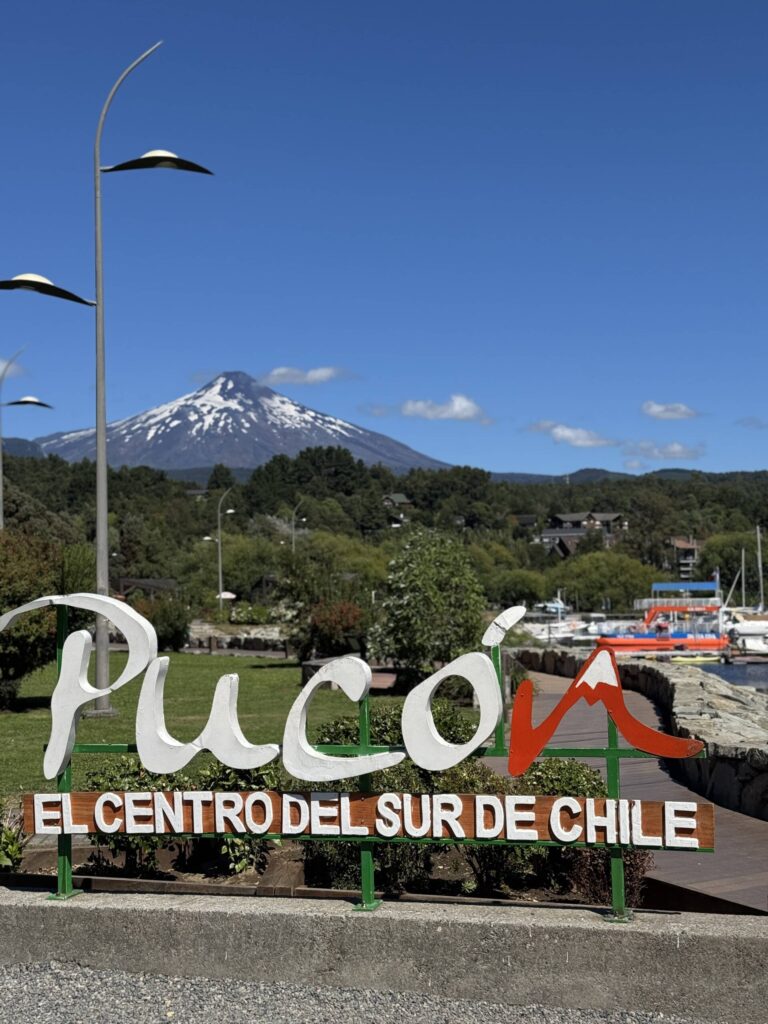
The first time I came to Pucón, everyone told me the same thing: climb volcano Villarrica, go rafting, maybe try kayaking. But after one full day of running around, my body had other plans. I didn’t want another adrenaline hit - I wanted hot water, steam, and absolute silence. That’s when I discovered what locals already know: the best part of southern Chile isn’t just the volcano, it’s Hot Springs Pucón.
Driving out of town, the road quickly turns from smooth asphalt to gravel, dust swirling in the rear-view mirror. By the time you reach the forest, phone signal is gone and you’re left with the sound of rushing rivers and birds echoing between the trees. That’s where the hot springs in Pucón really begins - tucked away in valleys, hidden behind waterfalls, or spread out in gardens.
I’ve visited a handful of these thermal spots. Some are raw and rustic, with little more than a stone pool by the river. Others feel designed, almost spa-like, with cafés, changing rooms, and towel service. Each one has its charm, but all share the same magic: stepping into steaming volcanic water while the southern Chilean forest closes in around you.
In this guide, I’ll take you through the top 7 hot springs in Pucón.
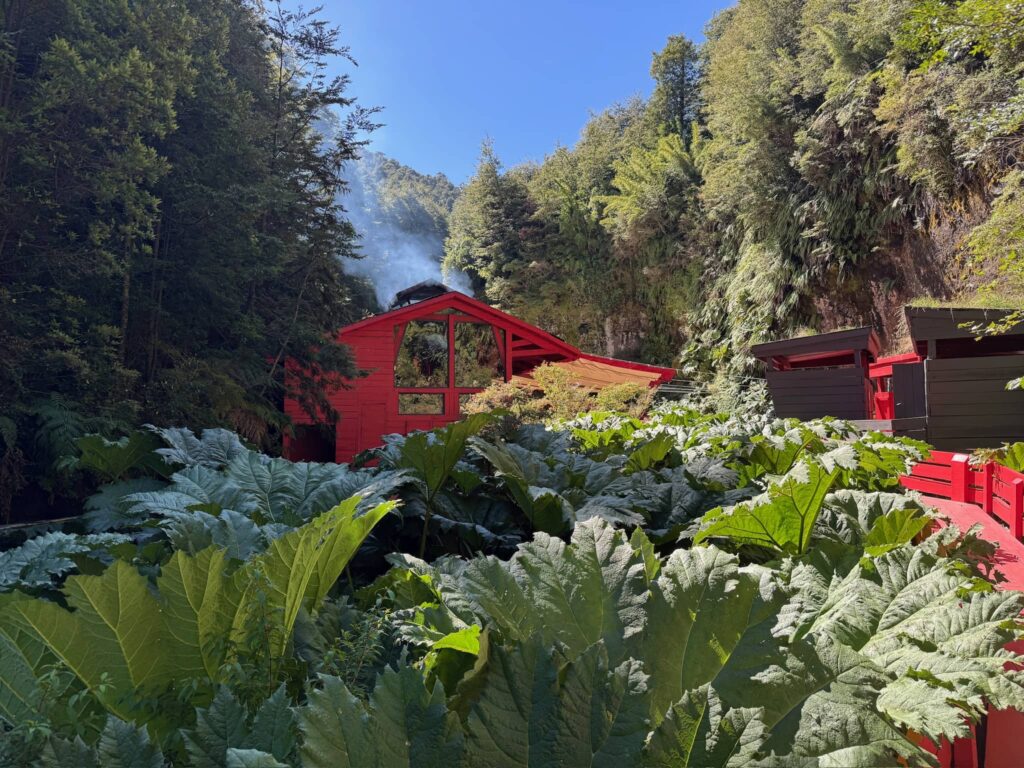
The drive alone feels like an adventure - gravel roads, forest closing in, and then suddenly a red wooden walkway cutting through the green. Termas Geométricas isn’t just a hot spring, it’s a design masterpiece hidden in the canyon of the Quetrupillán volcano. Twenty pools are spread out along a 450-meter path, some steaming at 46°C, others pleasantly warm, with a freezing waterfall slicing through the middle.
Why go: Because nowhere else in Chile blends wild forest and bold architecture this perfectly. It’s dramatic, unforgettable, and feels like walking through a dream before stepping into the water.
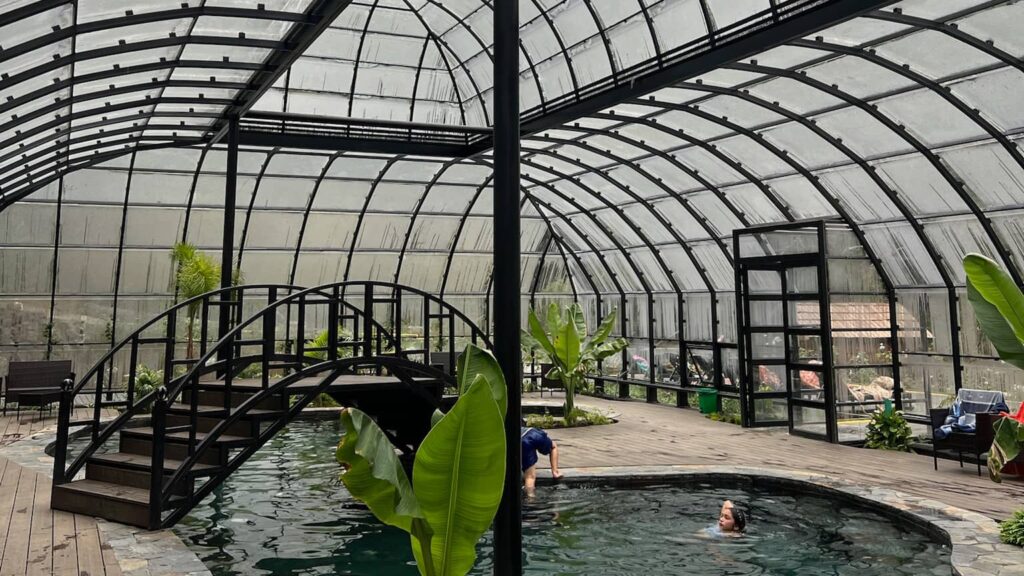
It’s quite new - and it feels that way in the best sense. Closer to Pucón and easier to reach, Parque Termal Botánico is like soaking in a botanical garden. Paths lead you past hibiscus flowers and shaded trees until you find pools tucked between plants - some open-air, others cave-like, and even one inside a glass “crystal palace.” The vibe is calm and colorful, with modern facilities like heated changing rooms and a café adding comfort without losing nature.
Why go: Because it’s a garden retreat as much as a hot spring. Perfect if you want something peaceful, family-friendly, and different from the more rugged springs.
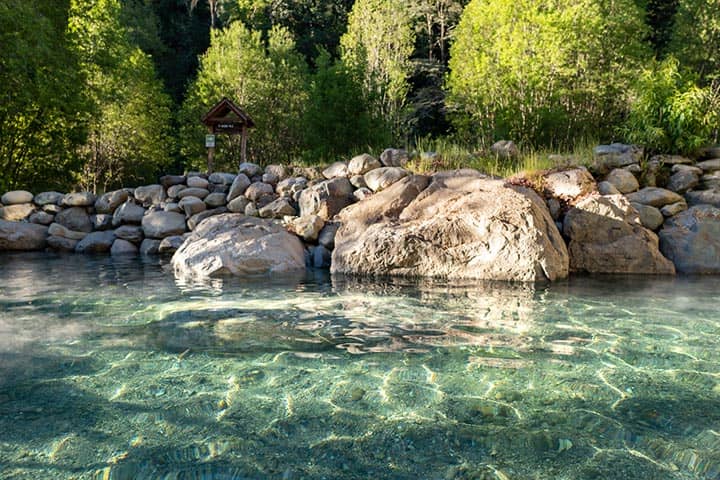
Los Pozones strips it back to basics: stone pools carved into the riverside, surrounded by forest and mountain air. It’s rustic, cheaper than the polished spas, and especially atmospheric at night when steam rises under the stars. There’s nothing fancy here - just natural hot water, rocks, and the sound of the river.
Why go: Because you want the raw, no-frills version of hot springs. Ideal for backpackers, budget travelers, or anyone who prefers authenticity over luxury.
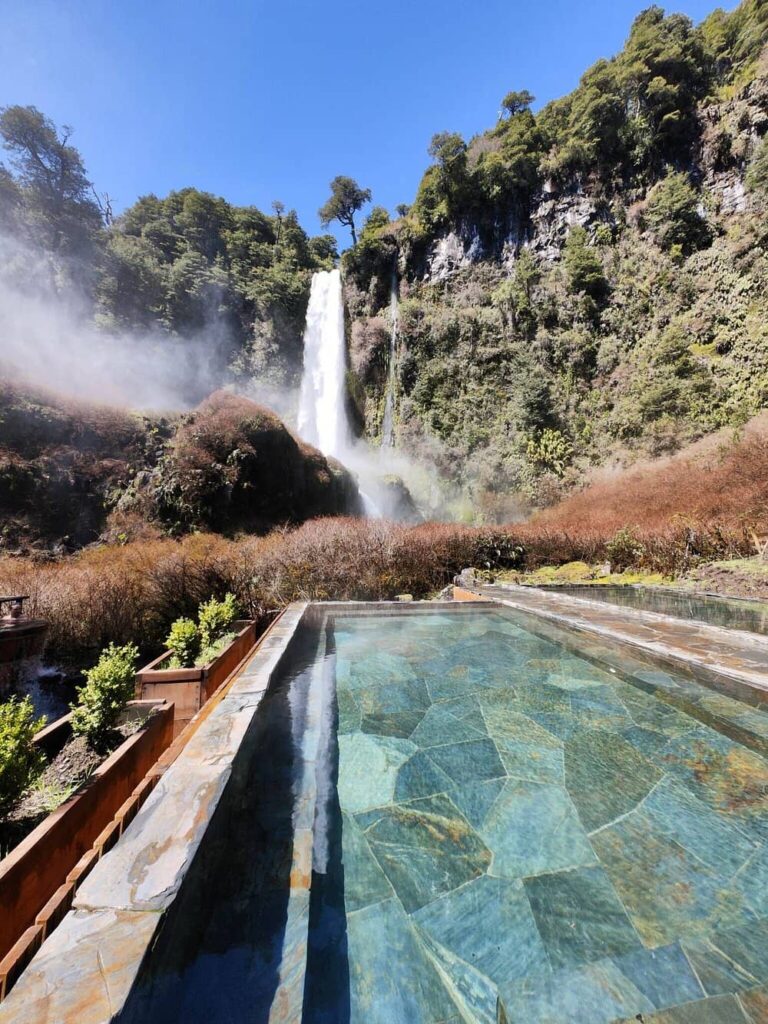
About 30 km from Pucón, Salto El León mixes two things you don’t usually find together: hot pools and a massive waterfall crashing down just a short walk away. The pools themselves are smaller and simple, but the setting makes it worth the trip. The sound of the falls, the forest air, and the quick walk through nature give it a unique feel.
Why go: Because you want a soak with a side of sightseeing. The waterfall alone is worth the visit, and adding hot pools makes it even better.
Quimey-Co sits in a sunny clearing with several outdoor pools looking out over the forest. It’s more organized than Los Pozones, but not as curated as Botánico or Geométricas - a middle ground between rustic and spa. You’ll find space to stretch out, warm water to relax in, and plenty of sunshine on clear days.
Why go: Because you want balance. It’s easy, comfortable, and still natural, a solid option if you don’t want to choose between wild and polished.

Indómito feels more like a wellness center than a wild soak. Towels are included, there’s a restaurant serving full meals, and the pools are laid out with comfort in mind. You don’t come here for wilderness or rugged charm - you come for convenience and a smooth experience.
Why go: Because you want everything taken care of. Great if you’re short on time, traveling with kids, or just want to relax without thinking about logistics.

Hidden deeper in the valleys, Río Blanco is remote, rustic, and off-the-grid. The pools are simple but well-kept, surrounded by forest and with a small campground nearby if you want to stay the night. There’s even the surprise of grabbing a cold beer after your soak. It’s quiet, peaceful, and far from the tourist crowds.
Why go: Because you want to disconnect completely. If your idea of paradise is hot water, forest silence, and zero phone signal, this is it.
For me, hot springs in Pucón aren't just about relaxing - it’s about slowing down after days filled with hikes, volcano climbs, and road trips. The moment you sink into that steaming water, surrounded by forest and mist, it feels like time stops.
If you’re heading this way, start with Termas Geometricas for the pure wow factor, and Parque Termal Botánico if you prefer something new, calm, and closer to town. Both are unforgettable in their own way.
And if you want to know what they’re really like, read my full reviews. I’ve driven those gravel roads, slipped on those walkways, and stayed in those pools way too long - all so you can pick the perfect hot spring for your trip.
Planning a trip to Chile almost always means flying into Santiago first - the city is the main international hub and the gateway to the rest of the country. But here’s the thing: should you actually spend a few days here, and if so, when’s the best time to visit Santiago?
From my experience - and after digging deep into local travel patterns and climate data - there’s no single “perfect” month. It really depends on whether you want to ski, sip wine during harvest season, or explore the city without the crowds. That’s why I’ve broken Santiago down season by season, and then month by month, so you can match your trip to the experience you actually want.
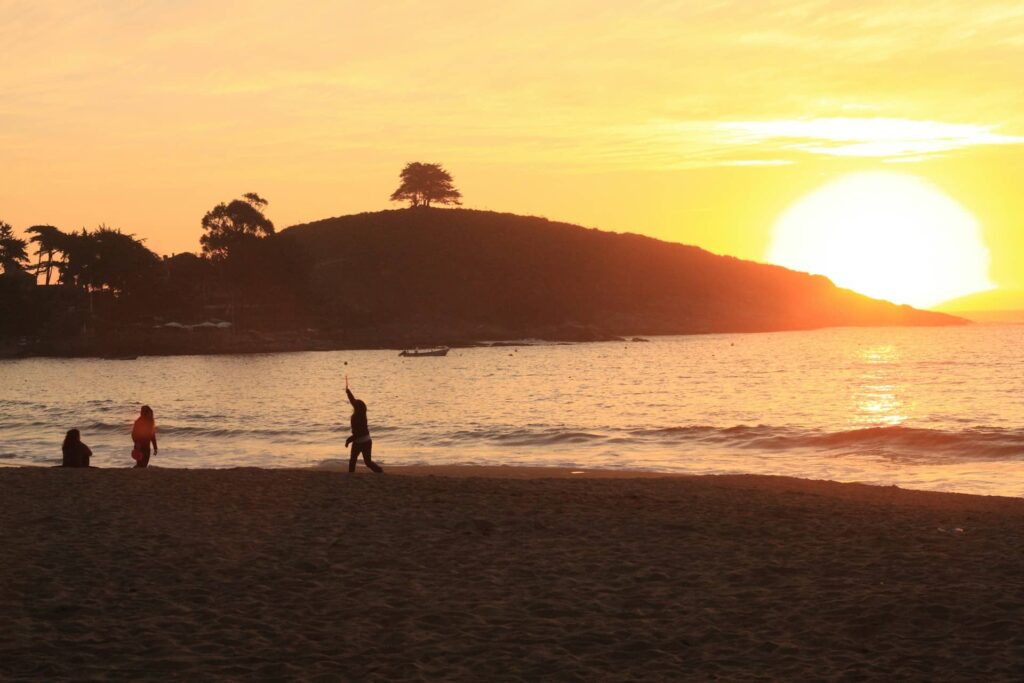
Summer in Santiago means hot, dry days often above 30°C (86°F) and almost zero rain. January is lively with rooftop bars and busy parks, while in February many locals leave for vacation, making the city quieter but with some restaurants closed.
It’s also the best time for day trips: vineyards are sunny, and the Andes look stunning in the mornings before the haze sets in. If you don’t mind the heat (and a bit of smog), summer gives you long days and plenty of sunshine.

Autumn is Santiago at its most comfortable. Days are sunny but not too hot, nights are cool, and the city’s parks turn golden. Crowds thin out after summer, so it’s easier (and often cheaper) to get around.
March and April are also wine harvest season — vineyards buzz with festivals and tastings just outside the city. If you want mild weather, fewer tourists, and a glass of fresh vino, autumn is hard to beat.
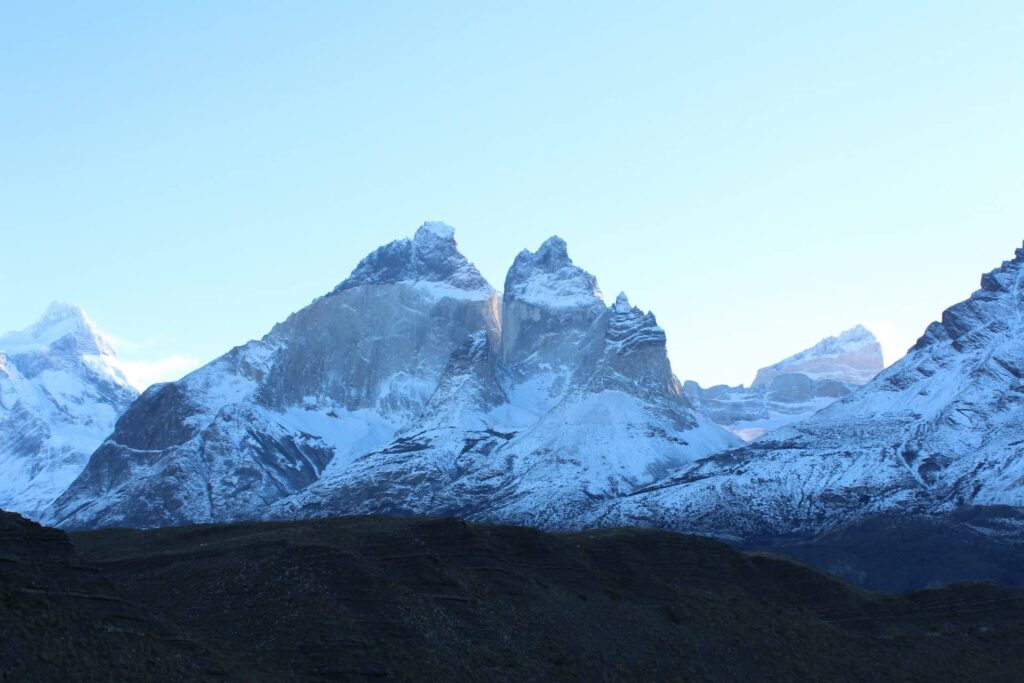
Winter in Santiago is cool and damp, with daytime temps around 10-15°C (50–59°F). Expect some rain and the occasional smoggy day, but also snow-capped Andes right on your doorstep.
This is ski season - Valle Nevado, La Parva, and Portillo are just an hour or two away. Hotels and flights are usually cheaper than in summer, making winter a solid choice if you’re into skiing or city exploring without the crowds.
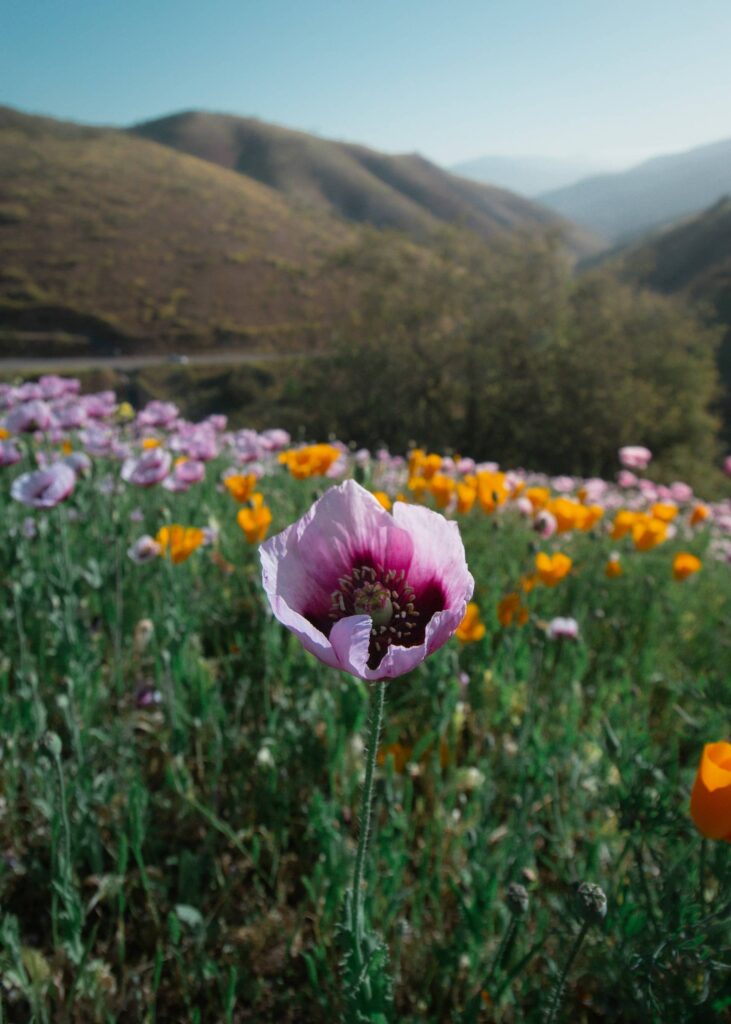
Spring is when Santiago wakes up again - clear skies, blooming parks, and mild temps that make walking the city a joy. By September, Fiestas Patrias (Chile’s Independence celebrations) take over with barbecues, music, and plenty of wine.
October and November are perfect for vineyard visits and sightseeing without the summer heat. If you want lively festivals, comfortable weather, and fewer tourists, spring is one of the best times to be in Santiago.
Summer is for travelers who love long sunny days, rooftop drinks, and easy day trips to vineyards or the coast. Expect hot, dry weather, busy parks in January, and a quieter vibe in February when many locals head out of town. It’s great for sunshine seekers, but less ideal if you hate heat or want top restaurant options (some close in Feb).
Autumn is perfect for travelers who want mild weather, fewer crowds, and a more local vibe. The city cools down, parks turn golden, and prices drop after summer. Wine lovers will especially enjoy March and April, when vineyards around Santiago celebrate harvest season with tastings and festivals.
Winter is ideal for skiers and budget travelers. The Andes ski resorts are in full swing, just a short drive from the city, while hotels and flights in Santiago are usually cheaper than in summer. Expect cool, damp days, some smog, and fewer tourists - great if you prefer a quieter city break.
Spring is for travelers who want the best balance - sunny but not scorching days, lively festivals, and vineyards turning green again. It’s great for sightseeing, outdoor walks, and timing your trip with Fiestas Patrias in September. Expect a cheerful atmosphere, comfortable temps, and fewer crowds than in peak summer.

The best time for wine lovers to visit Santiago is March and April, during the vendimia (harvest season). Vineyards in the Maipo and Casablanca valleys buzz with grape-picking festivals, tastings, and live music. It’s when the region feels most alive, and you’ll get to try wines fresh from the harvest. Spring (October–November) is a close second, with lush green vineyards and fewer crowds.
Budget travelers will find the best deals in May or August. These shoulder months mean lower hotel rates, cheaper flights, and far fewer tourists. The weather is cooler, and you might get some rain, but the city feels more local and relaxed. If saving money matters more than sunshine, this is the time to go.
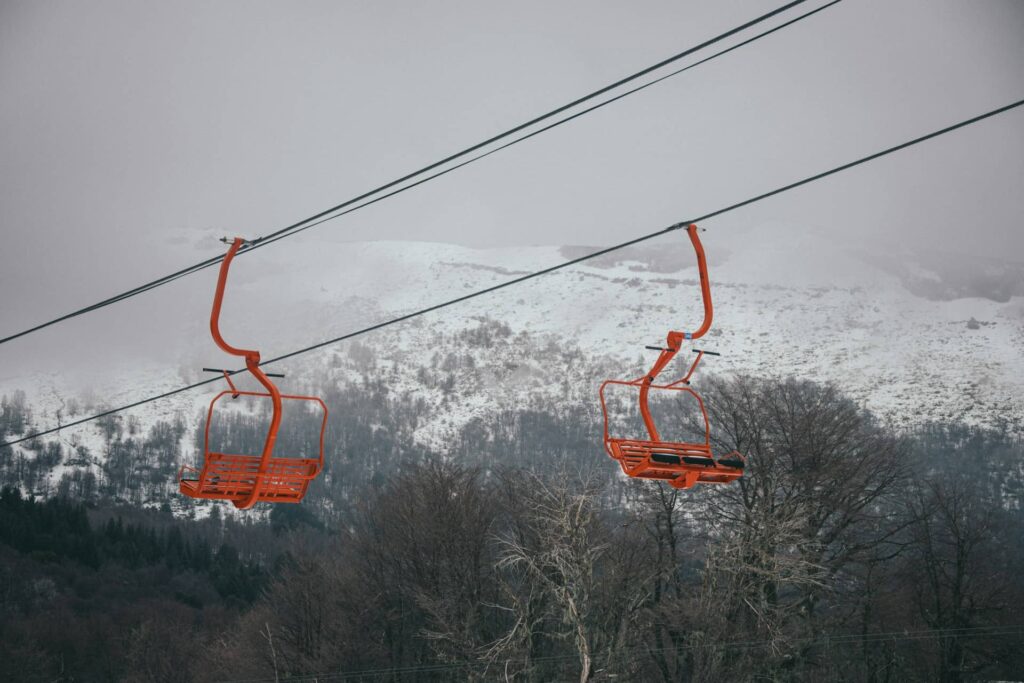
If skiing is on your list, July is prime time. The Andes resorts like Valle Nevado and Portillo have their best snow, though expect more crowds due to Chilean school holidays. For a quieter slope experience, late June or August works too. For hikers and outdoor explorers, spring (October-November) is ideal - clear skies, mild temps, and nearby trails without the summer heat.
The standout time for festivals in Santiago is September, when Fiestas Patrias fills the city with barbecues, traditional dancing, and endless wine. Music fans should aim for March or April, when Lollapalooza Chile takes over Parque O’Higgins. And if you’re into local culture with a foodie twist, the March-April wine harvest season is packed with vineyard festivals just outside the city.
Hot, sunny, and busy. Expect temps over 30°C (86°F), buzzing parks, and lively nightlife. Great for rooftop bars and day trips, though smog can make afternoons hazy.
Still hot, but quieter. Many locals leave for vacation, so the city feels calmer with less traffic. Some restaurants and shops close, but it’s easier to explore tourist spots without crowds.
A sweet spot. Comfortable weather, fewer tourists, and the start of wine harvest season in nearby valleys. Perfect for vineyard tours and cultural festivals.
Crisp, clear days and autumn colors in the city’s parks. Vineyards are still celebrating harvest. Hotels are less busy, making this one of the best months to visit.
Cooler, with a relaxed local vibe. Fewer tourists, lower prices, and quieter streets. A great month for budget travelers who don’t mind chilly evenings.
Winter sets in. Cool, damp days in the city, but ski resorts in the Andes open up. Hotels in Santiago drop prices, making it easy to combine city life with skiing.
Peak ski season. The mountains are busy, especially during Chilean school holidays, so book early if you want the slopes. Santiago itself stays cool and quieter than summer.
Still winter, but slopes are less crowded as holidays end. The city is calm, prices are low, and clear days offer great views of the snow-covered Andes.
Spring begins and Fiestas Patrias takes over. Expect lively festivals, barbecues, and music everywhere around September 18–19. Book early - it’s one of the most exciting times to be in Santiago.
Sunny, mild, and green. Perfect weather for sightseeing and wine tours. Tourist numbers rise a little, but it’s not yet summer-busy.
Warm but not scorching. Parks are lush, vineyards are vibrant, and the city feels alive without overwhelming crowds. Another great “shoulder month.”
Summer kicks in. Long, hot days and busy streets in the lead-up to Christmas and New Year. Santiago stays active, while nearby Valparaíso gears up for its famous fireworks.
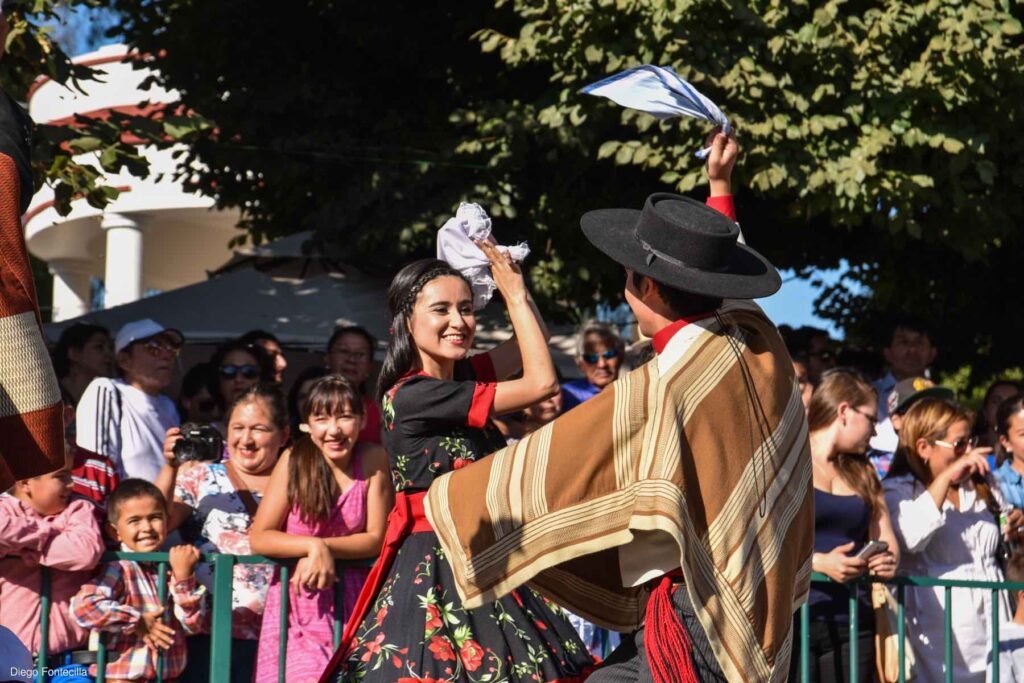
Chile’s Independence Day celebrations on September 18–19 turn Santiago into one big party. Parks fill with food stalls, barbecues (asados), traditional cueca dancing, and plenty of wine and pisco. Locals flock to fondas (festival grounds) that pop up around the city, especially in Parque O’Higgins. It’s one of the most authentic cultural experiences you can have in Santiago, but expect higher prices and book accommodation early.
March and April are harvest season in Chile’s wine valleys, and Santiago is the perfect base to experience it. Vineyards in Maipo, Colchagua, and Casablanca host vendimia festivals with grape stomping, live music, and endless tastings. It’s the best time to see the wine culture in full swing - and yes, the fresh wines taste even better when you’re standing right in the vineyard.
Every March or April, Santiago hosts Lollapalooza Chile in Parque O’Higgins - a massive music festival that brings international headliners and local artists to the city. Expect multiple stages, food trucks, and thousands of fans. If you’re into big concerts and high energy, timing your trip around Lolla adds a whole different vibe to your Santiago visit.
Beyond the big ones, Santiago has plenty of smaller events worth noting. New Year’s Eve brings fireworks and street parties, though the most famous show is in nearby Valparaíso. Christmas is family-focused, with the city quieter than usual. In January, the Santiago a Mil theater festival fills the city with live performances, parades, and art installations. Holy Week (Semana Santa) in March or April can mean closures, but it’s also a time to see local traditions. These smaller events give Santiago its rhythm throughout the year, so it’s worth checking the calendar before you go.
I’m used to the straight, flat Dutch roads where cows outnumber the cars — so stepping into Santiago’s traffic for the first time was a whole new experience. Wide highways cutting through the city, sudden mountain curves just 30 minutes away, and taxi drivers who seem to know secret shortcuts you’ll never find on Google Maps. That’s when I realized: Car Rental Santiago isn’t just about getting from A to B, it’s about being prepared for Chile’s unique driving culture.
In this article I’ll walk you through everything you need to know - from picking up your rental at Santiago Airport (SCL) to choosing the right car type if you’re planning to drive into the Andes. Whether you want a small car just to cruise around the city, a 4x4 for a Patagonian road trip, or simply the cheapest option available, this overview will save you time, stress, and money.
Let’s start with the basics: why renting a car in Santiago might be the best decision for your trip.

One of the first things I noticed after landing in Santiago is how quickly the scenery changes. Within half an hour you can be in the middle of the Andes, sipping coffee in a mountain village, or driving through endless vineyards in the Maipo Valley. With renting a car in Santiago, you’re not tied to bus schedules or waiting for an Uber that never shows up outside the city center.
You set your own pace: stop for empanadas in a roadside stand, take that random detour into the mountains, or keep driving until you find a small town that doesn’t even show up on Tripadvisor. That freedom is priceless.
From my personal experience, Santiago itself has a decent metro system. If you’re just staying in the city for a couple of days, you might not need a car at all. But the moment you plan a day trip - Cajón del Maipo, Valparaíso, ski slopes in winter - public transport suddenly gets complicated and time-consuming.
I remember trying to figure out buses to Cajón del Maipo and realizing I’d lose half the day just waiting. With a rental, you leave when you want, come back when you want, and don’t have to carry your luggage through a crowded metro station. In short: if you want to truly explore beyond the city limits, car rental Santiago is the smarter choice.
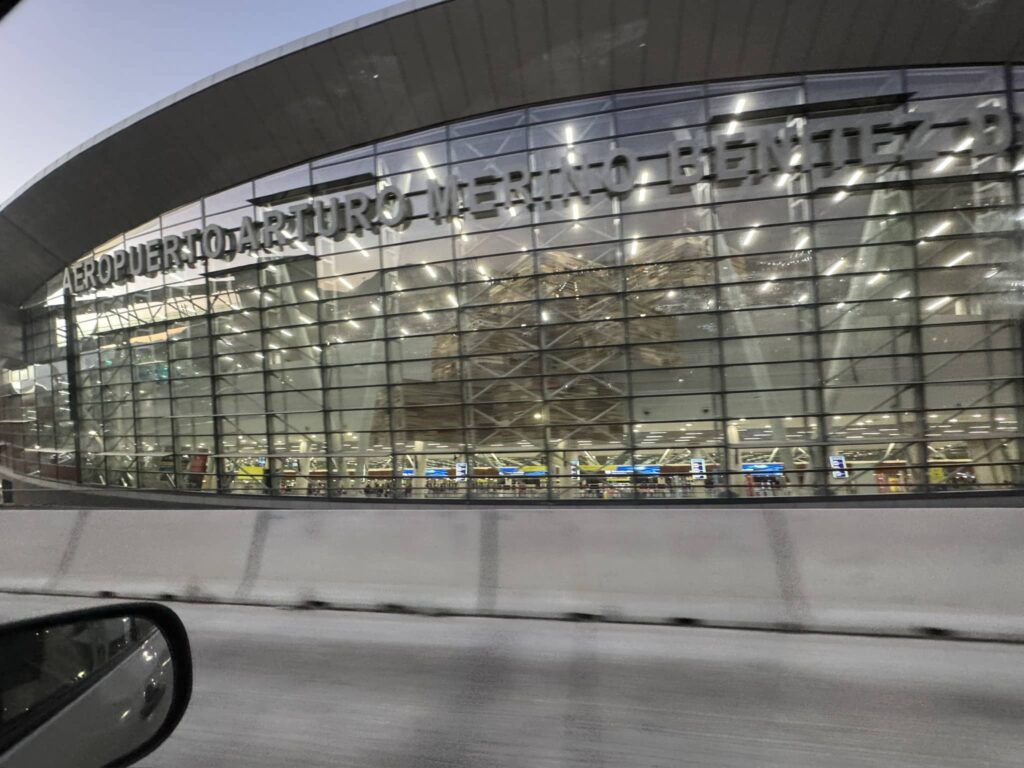
Arriving in Santiago can feel a little overwhelming: new country, new language, long flight. Luckily, renting a car at the Santiago airport is pretty straightforward. Most major companies have their counters right inside the arrivals hall of Terminal 1. You just walk out of baggage claim and there they are - Avis, Hertz, Sixt, Europcar, Budget.
The actual cars are parked in a rental lot just outside the terminal, about a 5-10 minute walk or a quick shuttle. Hand over your documents, sign the contract (don’t forget to check what’s included in the insurance), and you’re on the road in less than half an hour.
If you’re like me, you probably check Google Reviews before choosing a rental company. At Santiago International Airport, the biggest names are all present:
There are also several Chilean companies (like Econorent or Chilean Rent a Car) that sometimes offer cheaper daily rates, but with mixed reviews. If you value peace of mind, stick to one of the global players; if price is your top priority, local brands might be worth a look.
Here’s my personal lesson: don’t wait until you’re standing in Santiago Airport to book a car. Once, I thought I’d save time by walking up to the counter, only to find the car category I wanted was completely booked. Booking in advance online not only secures your car type (compact, SUV, 4x4), but also usually gets you a better price.
That said, if you’re traveling off-season, you might score last-minute deals on arrival. Still, for peace of mind - especially if you’re heading straight from the airport to the mountains - booking your car rental at the Santiago airport ahead of time is the way to go.

If you’re planning to stay mostly inside Santiago, a small or compact car is your best friend. The city can get busy, parking spaces are often tight, and fuel prices aren’t exactly cheap. A tiny Kia Morning for example, is perfect for zipping around the city, sliding into narrow parking spots, and not stressing when traffic gets chaotic. For short distances and city trips, you don’t need a big SUV - a smaller rental will save you both money and nerves.
The moment you leave Santiago, the landscape changes dramatically. Heading to Cajón del Maipo? Planning a ski trip in the Andes? Driving the rougher stretches of the Carretera Austral? That’s when an SUV or even a 4x4 becomes more than just comfort - it’s almost a necessity. I still remember driving up to the mountains and being very glad I had a rental with some power behind it; the steep climbs and gravel roads are no joke. If your Chile itinerary includes nature, mountains, or long road trips, this is where you don’t want to go cheap.
Of course, not every traveler is after practicality. In Santiago you’ll also find options for luxury sedans, convertibles, and even high-end brands. It’s not the cheapest way to get around, but if you’re in town for a special occasion, a business trip, or just want to enjoy cruising through the city in style, it’s available. Several international companies at the airport, as well as boutique rental agencies in the city, offer premium cars. It’s a fun way to make your trip unforgettable - even if you’ll spend half the time stuck in traffic on Avenida Apoquindo.

Prices for rental cars in Santiago can vary a lot depending on the season and the car type. On average, you’ll pay around $30–40 USD per day for a compact car, and between $50–80 USD for an SUV or 4x4. During high season (summer or ski season) those prices can easily go up. I remember renting in January and prices were almost double compared to September. If your dates are flexible, it really pays to book outside the peak weeks.
This is where many travelers get caught off guard. The base price looks cheap online, but once you’re at the counter, suddenly there’s talk of insurance upgrades, airport surcharges, or extra driver fees. Chile also has a tag system for toll roads (the “TAG”), which is usually added as a daily fee to your rental. And don’t forget fuel: some companies charge you for a full tank whether you use it or not. My advice? Always double-check what’s included in your quote and take photos of the car before you leave the lot.
If you’re after the cheapest deal, a few tricks help:
When searching for cheap car rentals in Santiago, balance is key. Saving $10 a day is great, but not if it means dealing with unreliable service or hidden charges. Sometimes peace of mind is worth the extra few pesos.
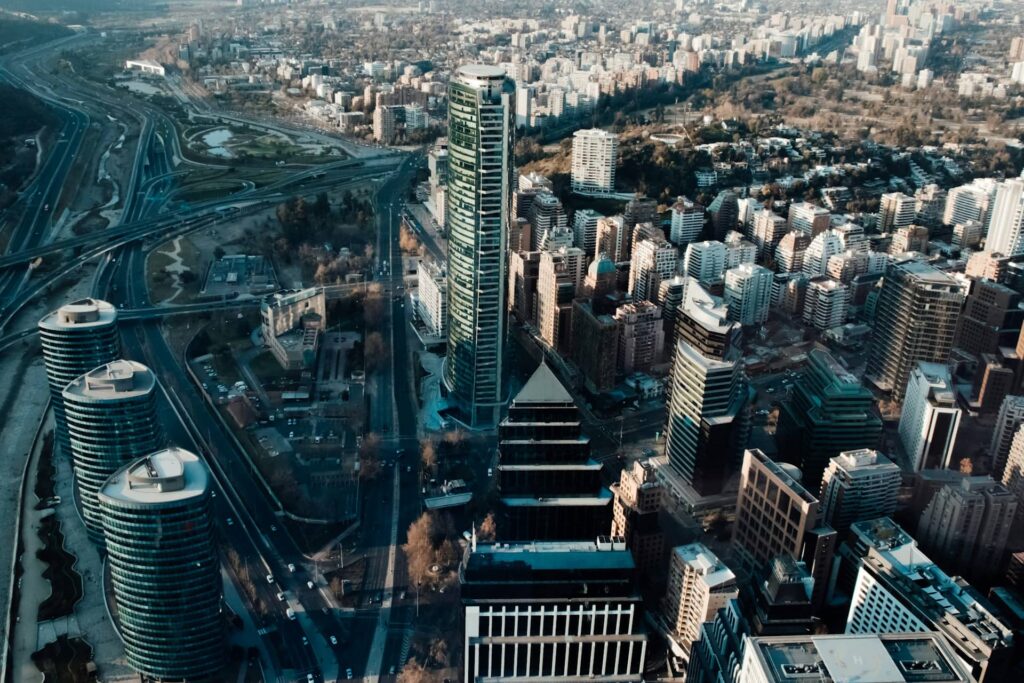
Before hitting the road, make sure your paperwork is in order. You’ll need a valid driver’s license (your national license is usually fine for short-term rentals, but some companies ask for an International Driving Permit, like I had to get at ANWB - the Dutch Tourist Association). A credit card in the driver’s name is usually also required for the deposit. Insurance is another key point: most rentals include basic coverage, but many travelers add supplemental insurance for peace of mind - especially if you’re heading into the mountains or rural areas where road conditions can be rougher.
Chile uses an electronic toll system in Santiago called TAG. Instead of paying cash at a booth, your rental car has a device that records every toll you pass. The company then charges you a daily fee for using it, on top of the toll costs. It’s convenient but adds to your budget, so ask the rental desk how much per day they charge. Gas stations are widely available in Santiago and along major highways, but once you venture into remote areas, fill up whenever you can - I’ve learned the hard way that “next station in 50 km” can actually mean 100 km if you miss the turn.
Driving in Santiago itself can feel chaotic (compared to the Dutch roads). People cut you off without hesitation, motorbikes weave between cars, and in rush hour, it sometimes feels like traffic rules are more of a suggestion than law.
One thing that surprised me at night: many cars and buses have tail lights positioned higher than I was used to, which means headlights from oncoming traffic can shine directly into your eyes - making night driving more tiring and, honestly, a bit blinding.
Outside the city, the pace is calmer, but watch for animals crossing the road and sudden changes in road conditions. Always drive defensively and give yourself extra time; it’s the safest way to enjoy the ride.
Santiago actually has one of the better metro systems in Latin America. If you’re only staying in the city, hopping on the metro is usually faster (and cheaper) than dealing with traffic and parking. Uber also works well here, especially for short rides or airport transfers, though technically it’s a gray area in Chile - drivers often ask you to sit in the front so it looks like you’re just friends. And then there are tours: for places like Valparaíso or wine country, a guided day trip might be less hassle if you don’t want to worry about navigating or driving after a glass (or two) of Carménère.
Chile is long. Really long. Driving from Santiago to the Atacama Desert would take you nearly a week — and that’s if you don’t stop. For big distances, domestic flights are the smarter choice: fly to Calama for Atacama, Puerto Montt for the Lake District, or Punta Arenas for Patagonia. From there, renting a car locally gives you flexibility without losing days behind the wheel.
That said, “distance” is very relative in Chile. I once drove from Temuco to Termas Geométricas - about 2.5 to 3 hours one way. Locals told me, “Oh, that’s not far at all!” But coming from the Netherlands, that felt like driving all the way from north down to all the way in the south in a single stretch. It made me realize how Chileans see long drives as normal, while for me it was a proper road trip.
In short: renting a car in Santiago isn’t complicated, but being prepared makes the difference between a smooth trip and a stressful one. With the right car, Chile’s highways, mountains, and coastlines are yours to explore.
When I first hiked in Santiago, I couldn’t believe how quickly the city disappeared. One moment I was weaving through traffic and noise, and the next I was on a dusty trail, the wind sharper, the air cleaner, with the Andes stretching out endlessly in front of me. The sounds of the city faded, replaced by the crunch of gravel under my boots and the rustle of dry grass in the breeze.
I’ve put together a Google Maps list of these 11 Santiago hiking trails, so you can easily save and use it for your own adventure. Follow it here: 🥾 Santiago Hiking Google Maps List.
From short city walks to full-day climbs, hiking Santiago has become my favorite way to escape the chaos and see the city from a completely new perspective - raw, quiet, and unforgettable.
These are the 11 best Santiago hiking trails that will show you exactly why.

If you ask locals about their favorite hike in Santiago Chile, chances are they’ll say Cerro Manquehue. Rising 1,638 meters above the city, it’s one of the most recognizable peaks and a true classic for Santiago hiking.
The trail isn’t long, but it’s steep. You’ll zigzag your way up dusty paths, sometimes scrambling over rocks, with every turn revealing wider views of both the city and the Andes. On a clear day, the panorama is unforgettable - Santiago’s skyline on one side, endless mountains on the other.
Difficulty: Moderate – expect a good workout, especially on hot days
Duration: Around 4 hours round trip
How to get there: The trailhead is at Vía Roja Street in Vitacura. You can grab an Uber or taxi straight to the start, or take public transport to Vitacura and continue by car.
If you only have time for one trail, this is easily one of the best hikes near Santiago Chile to experience how close the city is to real mountain adventure.
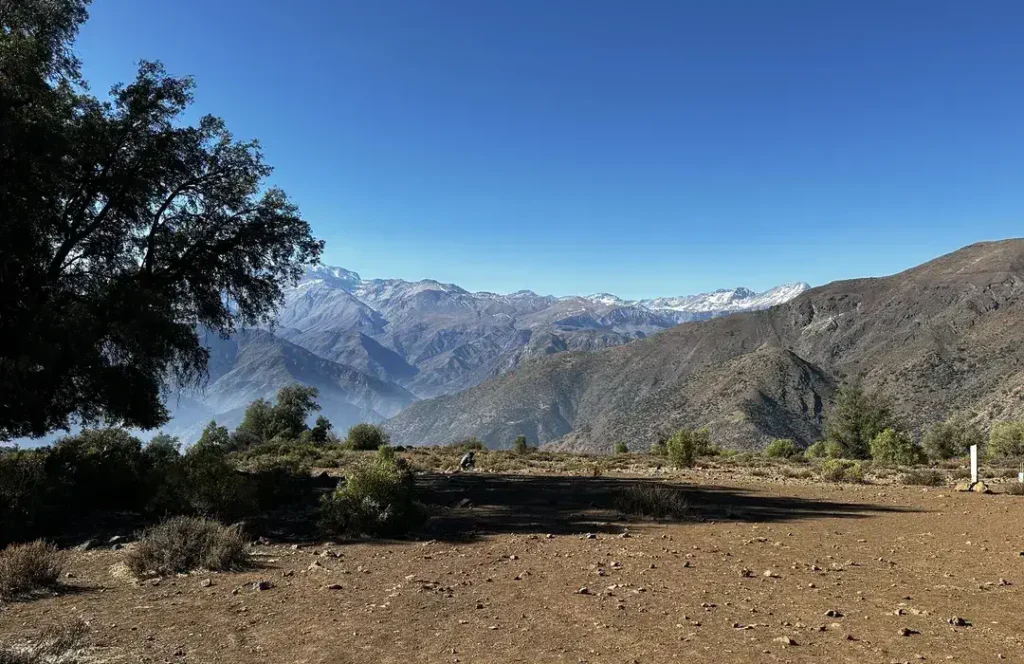
Alto del Naranjo is a local favorite for anyone looking for a quiet escape from the city. At 1,866 meters high, this trail gives you both a solid workout and incredible views of the Andes. It’s one of those hikes near Santiago where you really feel like you’ve left urban life far behind, even though you’re still so close to the capital.
The path begins at Puente Ñilhue Park on the road to Farellones. The trail is well-marked, with color-coded routes that branch off toward different peaks. Stick to the green markers to reach Alto del Naranjo itself. Along the way you’ll pass native trees and open ridges, perfect spots to pause and take in the scenery.
Difficulty: Moderate
Duration: About 4 hours round trip
How to get there: Take the road toward Farellones and get off at Puente Ñilhue Park. From there, follow the green-marked trail to Alto del Naranjo.
If you’re searching for hiking around Santiago Chile that’s accessible yet feels adventurous, Alto del Naranjo is one of the best options.
Salto de Apoquindo is one of the most rewarding hikes near Santiago, ending at a 30-meter waterfall hidden deep in the valley. Unlike many of the city’s steeper climbs, this route is less about pushing uphill and more about following a scenic trail through forests, streams, and open valleys. On hot days, some hikers even take a quick dip at the base of the falls.
The trail starts inside Aguas de Ramón Park, a protected area on the eastern edge of the city. The path is well-marked and takes you gradually deeper into the canyon, with plenty of shaded sections along the way. It’s a longer hike, so be prepared with enough water and snacks.
Difficulty: Moderate
Duration: Around 8 hours round trip
How to get there: Enter through Aguas de Ramón Park in La Reina. There’s a small entrance fee, and it’s best to arrive early since access is limited during busy weekends.
If you’re looking for hiking in Santiago Chile that combines adventure, scenery, and a natural reward at the end, Salto de Apoquindo is hard to beat.
El Roble is a peaceful trail that rewards hikers with sweeping views of the Andes and a chance to spot eagles circling overhead. The real highlight, though, comes in autumn when the oak forests turn deep shades of red and orange, making this one of the most scenic hikes around Santiago Chile during that season.
The path is steady but not too demanding, winding through forest before opening up to panoramic viewpoints. It’s the kind of trail that feels both calming and adventurous, perfect for a full day outdoors without pushing yourself too hard.
Difficulty: Easy to moderate
Duration: About 6 hours round trip
How to get there: Access is via the Caelu Chapel Association gate. Entry is usually open on weekends and holidays, but for weekdays you’ll need a special permit, so it’s best to plan ahead.
For anyone searching for the best hikes near Santiago that combine mountain views with seasonal color, El Roble is a memorable choice.
Cerro Pochoco is a classic for locals who want a quick but intense climb. The trail isn’t long, yet it rises steeply from the start, making it a great workout and one of the most popular hikes near Santiago for an afternoon escape. From the summit you get clear views of the city and the snowcapped Andes in the distance.
The path is rocky and dusty, so good shoes are essential. Because it’s shorter, many hikers choose it as a training route or as an introduction before tackling bigger peaks like Cerro Manquehue or Cerro Provincia.
Difficulty: Moderate to hard
Duration: Around 4 hours round trip
How to get there: The trailhead starts near San Enrique in Lo Barnechea. From Plaza San Enrique, follow Pastor Fernández Street and then El Alto Road until you reach the Pochoco Observatory parking lot.
If you want hiking around Santiago Chile that delivers a challenge without taking up your whole day, Cerro Pochoco is a perfect pick.
La Campana is one of the most famous hikes near Santiago, partly because Charles Darwin himself climbed it in 1834. The trail takes you through forests of quillayes and peumos before opening up to rocky slopes near the summit. The last stretch can be tough, with scrambling over boulders, but the 360-degree view from the top makes it worth every step.
The park is also home to Chile’s iconic palm trees, and in spring and autumn the landscape is especially colorful. Because it’s about two hours from the city, La Campana works best as a full-day trip, giving you time to enjoy both the hike and the surroundings.
Difficulty: Moderate
Duration: Around 7 hours round trip
How to get there: From Santiago, drive or take a bus to Olmué. From there, follow the road east to the Granizo sector, where the main entrance to La Campana National Park is located.
For anyone searching for the best hikes near Santiago Chile that mix history, biodiversity, and adventure, La Campana is a must.
Parque Andino Juncal is a private ecological reserve about three hours from Santiago, and it feels like stepping into another world. The trail begins with a quiet valley walk, passes through high Andean wetlands, and eventually leads to dramatic views of the Juncal Glacier. It’s one of the lesser-known hikes around Santiago, which means fewer crowds and a stronger sense of wilderness.
There are two main options: a shorter route to the river that’s manageable for beginners, and a longer, more challenging hike that crosses streams and climbs higher into the mountains. Both give you a taste of untouched Andean landscapes that are rare so close to the city.
Difficulty: Moderate to hard, depending on the route
Duration: 3 hours for the short loop, 8 hours for the longer trail
How to get there: Take the international road toward Mendoza and turn off on a gravel track that follows the old Trasandino railway. You’ll reach Los Hornitos, where the park rangers are based and where the trail begins.
If you’re looking for hiking day trips from Santiago Chile that feel remote and wild, Parque Andino Juncal is one of the best-kept secrets.
El Morado Glacier is one of the most iconic hikes near Santiago Chile, and for good reason. Located in the Cajón del Maipo valley, this trail takes you past rivers, alpine meadows, and rugged peaks before finishing at the base of the impressive hanging glacier. Standing there, surrounded by icy cliffs and bright blue sky, you feel like you’ve stepped deep into the Andes.
The trail isn’t overly technical, but the altitude and terrain can make it demanding. It’s a favorite for anyone looking to combine adventure with stunning mountain scenery on a single-day hike.
Difficulty: Moderate
Duration: Around 3 to 4 hours round trip
How to get there: From Santiago, drive into Cajón del Maipo and continue past Baños Morales. The trailhead begins about 1.5 km past the Choriboulder climbing area.
For hikers who want to experience the Andes without straying too far from the capital, El Morado is one of the best hiking day trips from Santiago Chile.
The Río de los Cipreses National Reserve is a quiet alternative to the more famous parks near Santiago. Its main trail runs for 33 kilometers, but most hikers choose shorter sections that pass through forests, rivers, and viewpoints over the valley. Along the way you can spot orchids, condors, and even the endangered Tricahue parrot, making it one of the most unique hikes around Santiago Chile.
What makes this reserve special is its variety. You can plan a multi-day trek with camping or simply enjoy a half-day walk to Los Maitenes sector. Either way, it offers a real sense of being off the beaten path.
Difficulty: Easy to moderate, depending on distance
Duration: From 3 hours to multiple days
How to get there: Take Carretera del Cobre from Rancagua to Coya, then continue into the Río de los Cipreses National Reserve. Public transport is limited, so driving or joining a tour is the easiest option.
For hikers searching for less-crowded routes and authentic nature, this is one of the best hikes near Santiago Chile to truly disconnect.
Cerro San Cristóbal is the most famous city hike in Santiago, rising right from the center and offering some of the best views without leaving town. The trails wind through eucalyptus and cactus, and at the summit you’ll find the Virgin Mary statue looking out over the city with the Andes as a backdrop. It’s one of the easiest ways to get a taste of Santiago hiking without needing a full day.
You’ll share the path with locals walking, running, or biking, especially on weekends. While it’s not remote like Cajón del Maipo, it’s a classic experience and perfect if you want to stretch your legs and catch sunset over the skyline.
Difficulty: Easy
Duration: About 1–2 hours round trip
How to get there: The main entrances are at Pío Nono in Bellavista or Pedro de Valdivia in Providencia. You can also take the funicular up and hike down if you want to save time.
For anyone short on time, Cerro San Cristóbal is one of the best hikes in Santiago Chile to combine urban life with mountain views.
Cerro Provincia is one of the toughest day hikes near Santiago Chile, and also one of the most rewarding. Standing at 2,750 meters, it towers above many of the other city peaks and delivers incredible views over both Santiago and the Andes. The climb is long and demanding, with steep switchbacks and rocky terrain, but reaching the summit feels like a true accomplishment.
Many hikers start before sunrise to make the most of daylight and cooler temperatures. If you’re prepared, you can also camp overnight near the summit and watch the city lights glow far below.
Difficulty: Hard
Duration: 8–10 hours round trip
How to get there: The trailhead is at Puente Ñilhue on the road to Farellones, the same starting point as Alto del Naranjo. From there, follow the blue-marked trail all the way up to Cerro Provincia.
For those seeking a serious challenge, Cerro Provincia is the ultimate test of Santiago hiking and a true Andean adventure right on the city’s doorstep.
Santiago is surrounded by mountains, which means the seasons change the hiking experience a lot. Summer (December to February) brings hot, dry days, so start early and carry plenty of water. Autumn (March to May) is cooler, with colorful forests in places like El Roble and La Campana. Winter (June to August) can bring snow to higher peaks such as Cerro Provincia, making them more challenging but also spectacular. Spring (September to November) is one of the best times for hiking in Santiago Chile, with mild weather and blooming landscapes.
Most of the hikes near Santiago Chile can be reached within one to three hours. For city hikes like Cerro San Cristóbal or Cerro Manquehue, you can simply grab an Uber or local bus. For Cajón del Maipo or La Campana, it’s easier if you have a car or join an organized tour. Public transport is limited for some of the more remote routes, so planning ahead is key. If you prefer convenience, guided hiking day trips from Santiago Chile are widely available and often include transport, making it simple to explore without stress.
Santiago walking tours are the fastest way to unlock the city. Standing beneath the Gran Torre Santiago at the end of a hot Chilean summer, my first thought was: "wow, that’s massive". But the real draw is everything under the surface - layers of history, culture, and stories written into the streets. From the 1973 coup at La Moneda Palace to the murals of Bellavista and the bohemian vibe of Barrio Lastarria, Santiago feels like an open-air museum. With a local guide, those stories leap from stone and cement into context you can feel - and below are the guided options that deliver.
And here’s the thing: walking past these places alone is one thing. But having a local guide who knows the stories behind the stones and cement is what truly makes Santiago come alive. The right walking tour turns what could be just another city stroll into an unforgettable journey through history, politics, food, and everyday life in Chile’s capital.
That’s why I’ve put together this list of the best Santiago walking tours in 2025 - so you can choose the one that fits your style and really experience the city on foot.
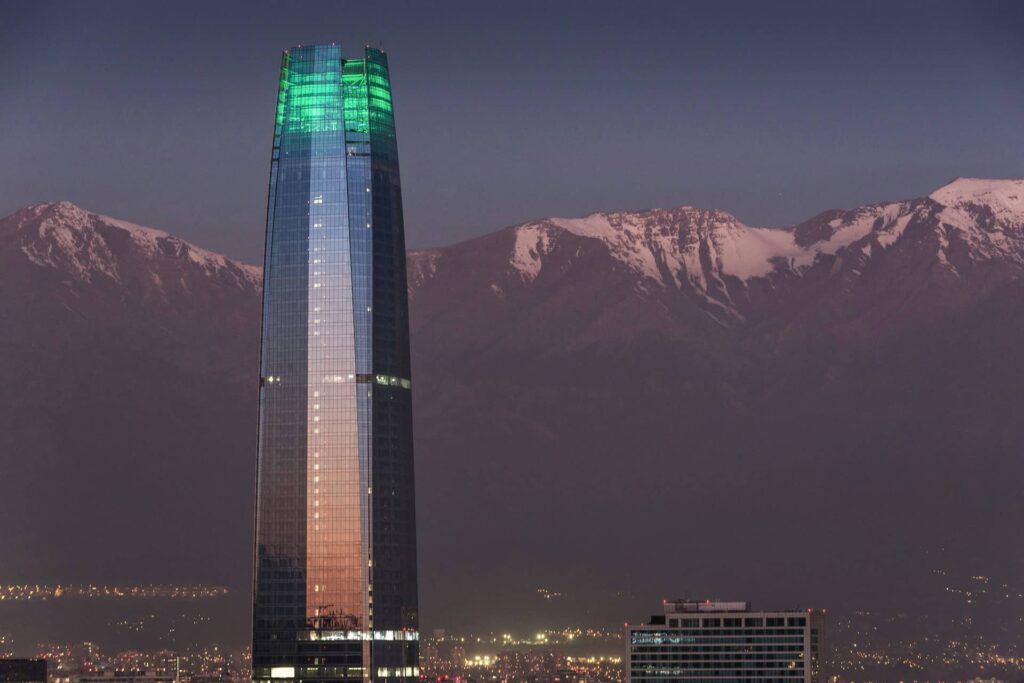
If you only do one walking tour in Santiago, make it the one that combines San Cristóbal Hill with the cable car ride. You start in the artsy streets of Bellavista, pass Pablo Neruda’s house La Chascona, and then ride the old funicular up the hill. At the top, the Virgin of the Immaculate Conception towers over the city with panoramic views stretching to the Andes - it’s the postcard view of Santiago.
The descent by cable car is just as memorable, gliding over green treetops with the skyline beneath you. What makes this tour stand out is how guides weave together urban culture, history, and local life. Instead of just snapping photos, you’ll hear stories that make every corner of the city park come alive.
If you’re curious about how Santiago’s history shaped today’s Chile, this is the walking tour to pick. You’ll dive straight into the historic center, stepping inside heritage buildings that most visitors just walk past. From the Metropolitan Cathedral to the Gabriela Mistral Cultural Center, every stop comes with stories of politics, art, and everyday life.
But this tour isn’t just about dates and monuments - it’s also about flavors. Along the way, guides introduce you to Chilean staples like mote con huesillos (a sweet peach drink with wheat) and local street snacks. It’s the perfect mix of history lesson and food crawl, told with the passion of guides who clearly love their city.
Sometimes the best way to explore Santiago isn’t with a group at all - it’s with a local guide who tailors the walk to you. These private tours feel less like sightseeing and more like hanging out with a friend who knows all the shortcuts, stories, and hidden courtyards you’d never find on your own.
Instead of following a fixed route, your guide adapts the tour around your interests. Want more street art? They’ll take you to Bellavista’s murals. Curious about food? They’ll point you to their favorite cafés and markets. Prefer history? You’ll hear personal stories that go beyond the textbooks. The result is a tour that feels genuinely personal, safe, and flexible.
If it’s your first time in Santiago and you want a little bit of everything, go for a city highlights walking tour. These walks blend together the city’s most iconic spots - from the political heart at La Moneda Palace to the lively Barrio Lastarria and Bellavista. You’ll pass through grand squares, colorful markets, and even catch street art that shows Santiago’s creative side.
What makes these tours special is the balance of old and new. One moment you’re standing in front of the neoclassical Metropolitan Cathedral, and the next you’re sipping a fresh juice at a bustling market surrounded by locals. Guides add context that ties together Chile’s past and present, helping you see the city not just as a visitor, but as part of its daily rhythm.
Santiago is a city best discovered step by step. From the heights of San Cristóbal Hill to the historic heart around La Moneda Palace and amazing Santiago day trips, every corner has a story waiting to be told. Walking tours aren’t just about seeing the sights — they’re about connecting with the guides who bring those stories to life, whether through history, food, art, or hidden neighborhoods.
So whether you’re after sweeping skyline views, a taste of local gastronomy, or simply a fresh perspective from someone who calls Santiago home, there’s a walking tour that fits your style. Lace up your shoes, join a guide, and let Santiago show you its soul - one street at a time.
There is SO much to do in and around Santiago. From colorful coastal towns and lush wine valleys to snowy mountains and hidden hot springs - the options are endless. If you’re planning your trip, you’ve got to make the most of it. That’s why I’ve put together my list of the 14 best day trips from Santiago Chile that you simply can’t miss.
You can either join an organized tour where everything is arranged for you, or rent a car and explore on your own. Most tours also let you cancel for free up to 24 hours in advance.

This stunning turquoise reservoir in the Andes is one of the most popular day trips from Santiago. You’ll hike along crystal-clear waters, breathe in the fresh mountain air, and feel like you’ve been transported straight to Patagonia, all without leaving central Chile.
After a scenic drive through the Andes, you can relax in natural thermal pools surrounded by mountains and rivers. This day trip from Santiago is all about unwinding—perfect if you want to combine adventure with pure relaxation.
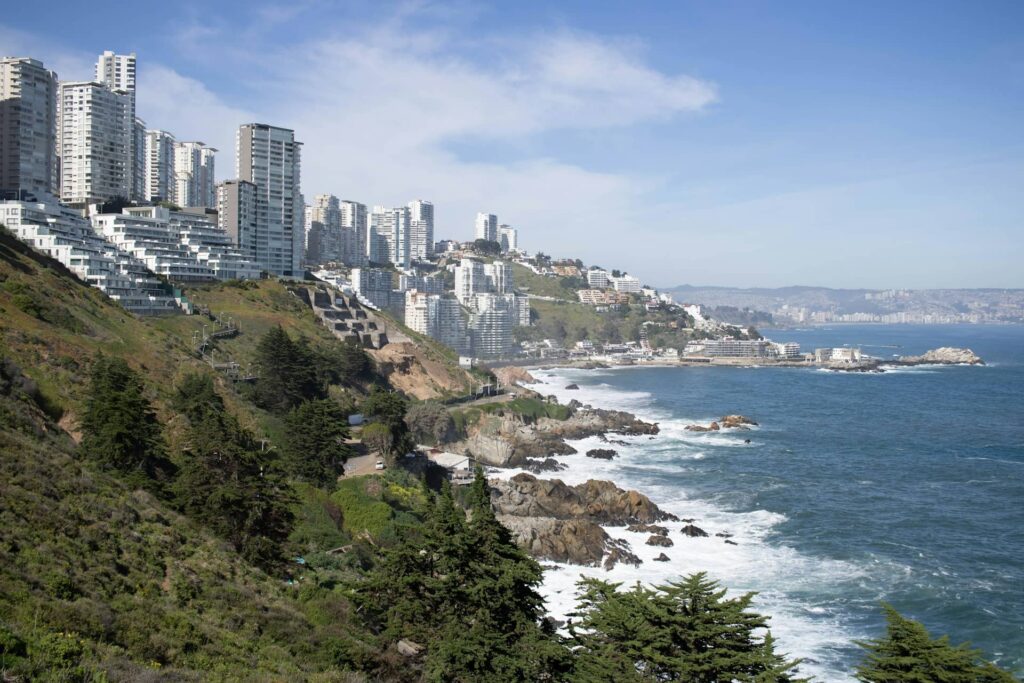
Wander through Valparaíso’s colorful hills and street art, then switch gears in Viña del Mar with beaches, gardens, and a coastal promenade. In just one day, you’ll get both bohemian charm and seaside relaxation.
Taste world-class Cabernet Sauvignon right where it’s produced, surrounded by vineyards and the Andes as your backdrop. A day here means cellar tours, expert guides, and plenty of glasses filled with Chile’s signature reds.
Cool-climate vineyards, rolling green hills, and ocean breezes make Casablanca a wine lover’s paradise. Combine tastings of crisp Chardonnay and Pinot Noir with a quick trip to the Pacific coast for the perfect mix of wine and sea.
Explore the city on foot with a local guide who brings its history, architecture, and hidden corners to life. It’s the easiest way to get a real feel for Santiago’s culture, all while discovering spots you’d probably miss on your own.
Watch the sun dip behind snow-capped peaks while the sky turns pink and orange over the Andes. Valle Nevado is the perfect spot for a golden-hour escape, whether you stay for dinner, stargazing, or just the unforgettable views.

Step inside Chile’s most famous vineyard and taste the wines that made it world-renowned. From strolling through historic cellars to sipping a glass of Casillero del Diablo, this tour is a must for wine lovers visiting Santiago.
One of Chile’s oldest vineyards, Undurraga blends tradition with award-winning wines in a gorgeous countryside setting. Just a short escape from Santiago, it’s a relaxed way to enjoy tastings, gardens, and history all in one visit.
Walk through Pablo Neruda’s quirky seaside home filled with treasures, then step outside to crashing waves and rugged coastline. It’s a mix of culture and ocean views that makes for an inspiring coastal getaway.
South of Santiago lies Colchagua, Chile’s red wine powerhouse known for bold Carménère and Cabernet. It’s one of the best day trips from Santiago Chile for wine lovers, offering vineyard tours, tastings, and even one of the country’s top museums.
A favorite trail for locals, Alto del Naranjo gives you sweeping views over Santiago and the surrounding Andes. It’s a moderate hike that rewards you with crisp air, city-meets-mountain scenery, and a real taste of Chilean outdoor life.
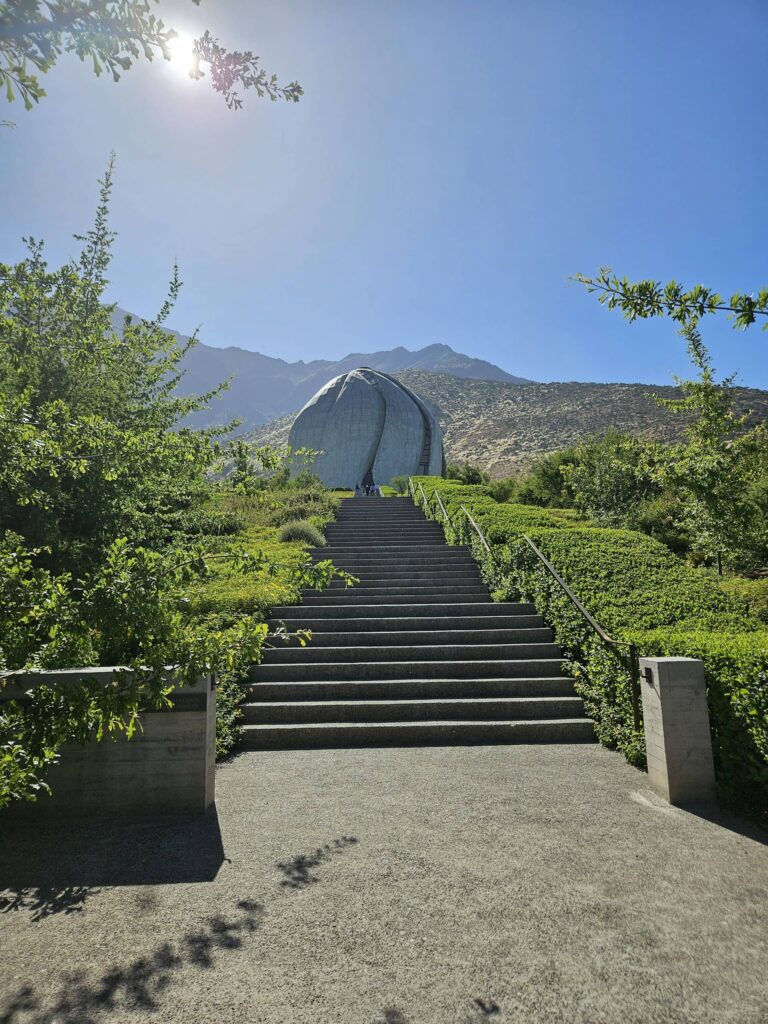
Start the day with the stunning Bahá’í Temple, a modern architectural gem overlooking Santiago. Then finish with tastings at nearby vineyards, an inspiring mix of spirituality, design, and Chilean wine culture in just one outing.
Wander through wetlands, birdwatching trails, and a giant aviary at Tricao Park before heading to Pomaire, a village famous for clay pottery and giant empanadas. This is one of those day trips from Santiago that mixes nature, culture, and local tradition all in a single outing.
From wine valleys and coastal towns to hot springs and mountain hikes, Santiago is surrounded by unforgettable adventures. Pick one (or three), book your spot, and get ready to discover just how much Chile you can see in a single day.
So, you’re trying to figure out the best time to visit Chile - wohoo! Traveling is exciting. But now comes the tricky question: when should you go? Chile is basically one giant geography flex - deserts, mountains, wine valleys, beaches, glaciers… and every season brings a totally different adventure.
Do you want long sunny days in Patagonia? Or skiing in the Andes while your friends back home are sweating through summer? Maybe you just want to sip wine in the Central Valley without melting or freezing.
The truth is, there’s no single “perfect” time - it depends on what you want to see and do. That’s why I’ve broken it down month by month, so you know exactly what to expect in 2025.
If you’re visiting Chile between December and February, get ready for peak summer vibes. While Europe and North America are wrapped in scarves and drinking hot chocolate, Chile is all about beaches, barbecues, and long sunny days. Christmas is big here too, but forget the snow-it’s more about fireworks, family gatherings, and eating outside in the warm evening air.
This is also the main holiday season for Chileans, so expect busy beaches, higher prices, and packed buses. Patagonia is at its absolute best (and most crowded), the Atacama is reliably sunny, and wine country is perfect for a glass (or two). If you want the full Chilean summer experience, this is it.
When March rolls around, Chilean kids head back to school and adults back to work - which means fewer crowds and better deals for you. Tourist hotspots like Patagonia and the Lake District suddenly feel calmer, and you can actually find a seat on that bus without elbowing someone.
Weather-wise, it’s a sweet spot. In the north (Atacama), it’s still warm and dry. Central Chile (Santiago, Valparaíso, wine valleys) enjoys sunny days and cooler nights, perfect for strolling, sipping, and not melting. Down south, autumn paints Patagonia and the Lake District in fiery reds and golds - it’s seriously underrated if you like hiking without the summer madness.
Bonus: March and April are wine harvest season. Expect grape-picking festivals, local celebrations, and plenty of excuses to drink straight from the source. Check out the best wine tasting day trips here.
Winter in Chile doesn’t mean the whole country freezes - it really depends on where you are.
In the north, the Atacama Desert keeps doing its thing: dry, sunny, and otherworldly. You’ll barely notice it’s “winter” here, except maybe for some cooler nights. Central Chile, around Santiago and the wine valleys, cools down and the Andes become the main attraction. Yes - Chileans actually go skiing! Resorts like Valle Nevado, La Parva, and Portillo fill up with locals escaping the city for a weekend on the slopes. July is also the main winter holiday month for schools, so expect busy ski resorts then. Down south, Patagonia and Torres del Paine are cold, windy, and much of the park infrastructure shuts down. Only hardcore adventurers go this time of year, while the Lake District stays cozy with wood-burning stoves, hot springs, and cabins tucked away in the rain.
Winter is not high season for international travelers, which means cheaper flights and hotel deals if you don’t mind layering up.
Spring in Chile feels like the country stretching after a long nap - flowers, festivals, and the first real taste of summer.
In the north, the Atacama Desert sometimes surprises with carpets of wildflowers in special “super bloom” years, though even without it you’ll get clear skies and perfect stargazing conditions. Central Chile, from Santiago to Valparaíso and the wine valleys, shakes off the winter chill. Temperatures rise, vineyards turn lush again, and September means Fiestas Patrias - Chile’s massive independence celebrations with barbecues, empanadas, and plenty of cueca dancing. Down south, Patagonia and the Lake District slowly reopen. Trails turn green, waterfalls are roaring, and by November many of the big hikes are back on the menu without the full summer crowds.
Spring is the sweet spot: mild weather, colorful landscapes, lower prices, and the country waking up - a perfect balance before the high season rush.
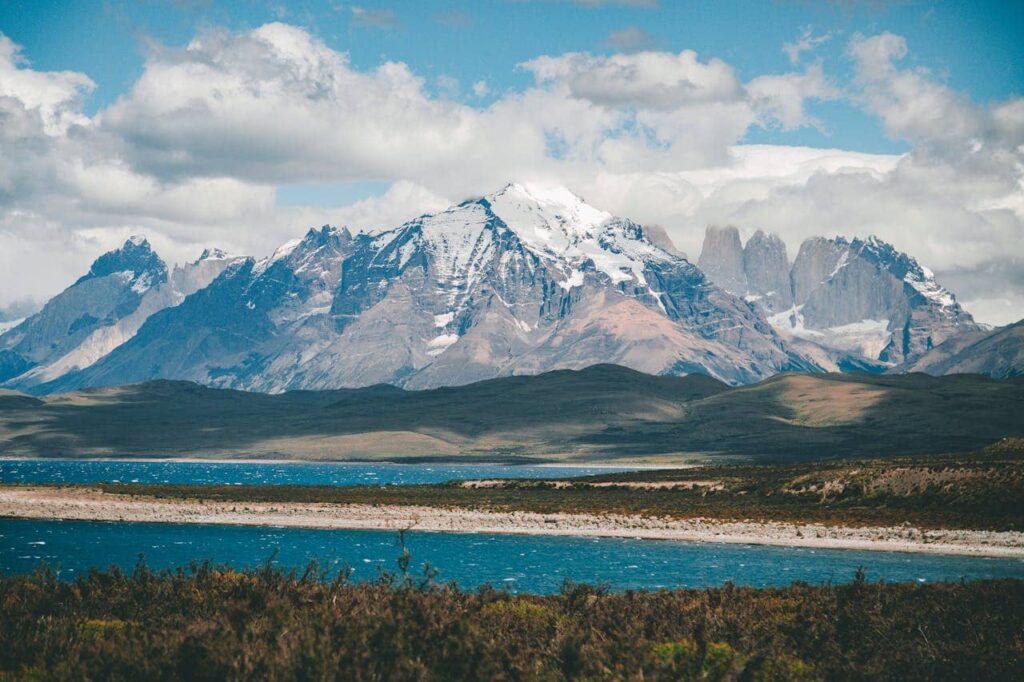
The main season in Patagonia is October to April. Trails are open, buses are frequent, and the weather is (somewhat) stable. January and February bring the longest days and best chances for clear skies, but also the biggest crowds and highest prices. November and March are ideal shoulder months with fewer people and still good weather, while April adds stunning autumn colors.
From May to September, much of Torres del Paine and the southern routes shut down due to snow, wind, and limited services. Only experienced adventurers tend to visit in winter.
For most travelers, the sweet spot is November or March - fewer crowds, manageable prices, and conditions that make the landscapes just as jaw-dropping.
The Atacama Desert is a year-round destination thanks to its dry climate and reliable sunshine. Days are usually warm, nights can be cold, and rain is almost nonexistent.
The busiest months are December to February, when both international visitors and Chileans on summer vacation fill San Pedro de Atacama. If you want quieter streets and lower prices, aim for the shoulder months (March-May or September-November). These still bring clear skies for stargazing and comfortable temperatures for visiting the salt flats, geysers, and valleys.
Winter (June-August) is also a good option: expect cooler days, very cold nights, and far fewer crowds.
In short: you can go any time, but spring and autumn are the best balance of weather, crowds, and cost.

Easter Island is also a year-round destination, but your experience changes with the seasons.
The warmest and busiest period is January and February, when Chileans flock here during summer holidays. This is also when the Tapati Festival takes place (usually early February), a cultural highlight with music, dance, and traditional competitions. Expect higher prices and more competition for flights and hotels.
The shoulder months (March-May and September-November) are often the best choice: pleasant temperatures, fewer crowds, and good conditions for hiking, biking, and exploring the moai sites.
June-August is the quietest period, with cooler temperatures, more rain, and shorter days - but you’ll practically have the island to yourself.
For most travelers, the sweet spot is spring or autumn for a balanced mix of weather, culture, and space to explore.
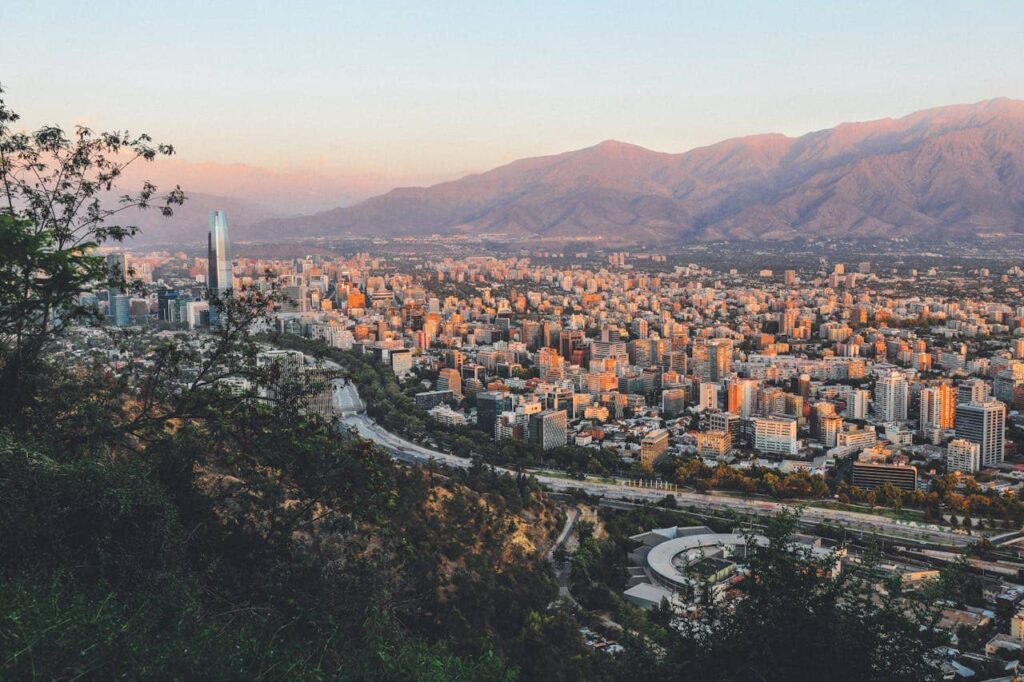
Santiago and the Central Valley are best enjoyed in spring (September-November) and autumn (March-May). Temperatures are mild, skies are usually clear, and you can explore the city or wine valleys without extreme heat.
Summer (December-February) can be very hot, with Santiago often above 30°C (86°F). The city also empties out in February when many locals go on holiday, so while it’s quieter, some restaurants and shops close.
Winter (June-August) brings cooler weather, occasional smog in Santiago, and rain in the valleys. But it’s also ski season, with the Andes resorts just an hour or two away.
If your trip includes both city life and wine country, aim for March-April (harvest season) or October-November for the best mix of weather, festivals, and vineyard visits.
The best months to visit Chile’s wine valleys are March and April, during the harvest season (vendimia). Vineyards buzz with grape-picking festivals, wine tastings, and local celebrations - it’s the most atmospheric time to be here.
Spring (September-November) is another excellent option, with green vines, mild weather, and fewer tourists. It’s perfect for wine tours combined with city visits to Santiago or Valparaíso.
Summer (December-February) brings hot days, especially in the Maipo Valley, though evenings cool down nicely. Expect more visitors since it overlaps with Chilean holidays.
Winter (June-August) is the quietest season. Some vineyards reduce their tour schedules, but you’ll still find tastings, and prices tend to be lower.
For the full experience, harvest season in March-April is hard to beat.
The Lake District is best from December to March, when long summer days make hiking, kayaking, and volcano-climbing possible. Lakes are warmer, trails are open, and small towns like Pucón and Puerto Varas are full of life and the Termas Geometricas are wonderful during this time. March-April is also beautiful, with autumn colors and fewer crowds. Winter brings more rain, but cozy cabins and hot springs keep it appealing if you don’t mind the weather.
Valparaíso, just 1.5 hours from Santiago, is a year-round city, but it shines in summer (December-February) with street festivals and sunny days for exploring its hills and murals. Spring and autumn are also great for wandering without the summer crowds. Winter is cooler and wetter, but the city’s café and nightlife culture carries on regardless.
If you want a balance of good weather and fewer tourists, aim for spring (October-November) or early autumn (March-April) in both regions.
Top pick: Patagonia is in full swing - long days, open trails, and perfect weather for the W Trek.
Watch out for: Peak holiday season. Expect higher prices and fully booked buses, flights, and hotels.
North: Atacama is hot but dry, ideal for stargazing and desert tours.
Central: Santiago can be scorching; many locals leave for vacation. Wine valleys are sunny and lively.
South: Patagonia has the best conditions of the year, while the Lake District is buzzing with summer travelers.
Top pick: Easter Island during the Tapati Festival - a unique mix of traditional dance, music, and competitions.
Watch out for: Still peak holiday season in Chile. Beaches, Patagonia, and Easter Island are crowded and more expensive.
North: Atacama stays hot and sunny, though tours and hotels book up fast.
Central: Santiago empties out as locals head to the coast; Valparaíso and Viña del Mar are packed with summer crowds.
South: Patagonia is still excellent for trekking, while the Lake District is at its busiest with Chilean vacationers.
Top pick: Wine harvest season kicks off - perfect time for vineyard tours and vendimia festivals.
Watch out for: Summer crowds fade, but prices can still be higher early in the month.
North: Atacama cools slightly but stays dry and sunny.
Central: Santiago and Valparaíso settle into comfortable weather; vineyards are alive with harvest activities.
South: Patagonia enters shoulder season - fewer people, slightly cooler, but still great for trekking. The Lake District shows the first hints of autumn colors.
Top pick: Autumn colors in Patagonia and the Lake District - fiery reds and golds everywhere.
Watch out for: Shorter days and cooler evenings, especially down south.
North: Atacama remains dry and sunny, with cooler nights.
Central: Santiago and the wine valleys enjoy crisp, clear days - harvest festivals are still happening.
South: Patagonia is quieter but still open; autumn scenery is stunning. The Lake District is calm, with great hiking and fewer crowds.
Top pick: Bargain season - cheaper flights and hotels almost everywhere.
Watch out for: Cooler weather sets in, especially in the south, and some Patagonia services begin closing for winter.
North: Atacama is still sunny and dry, great for year-round travel.
Central: Santiago has mild days and chilly nights; vineyards are quieter after harvest.
South: Patagonia winds down with limited access, but the Lake District shines with autumn colors before the rains arrive.
Top pick: Ski season kicks off in the Andes near Santiago.
Watch out for: Short days and chilly weather - especially in the south where many services close.
North: Atacama stays sunny with cold nights, great for stargazing.
Central: Santiago cools down; ski resorts like Valle Nevado and Portillo open for the season.
South: Patagonia is mostly shut down, while the Lake District turns rainy but cozy with cabins and hot springs.
Top pick: Skiing in the Andes - the slopes are at their best this month.
Watch out for: Chilean school holidays make ski resorts busy and prices higher.
North: Atacama is crisp and clear with very cold nights, but crowds are minimal.
Central: Santiago is chilly and sometimes smoggy; ski resorts are packed with local families.
South: Patagonia remains closed for most travelers. The Lake District is rainy but charming with firesides and hot springs.
Top pick: Quiet ski slopes in the Andes as the season winds down.
Watch out for: Still cold and rainy in much of the country, especially in the south.
North: Atacama stays sunny and dry with chilly nights - great time for photography and stargazing.
Central: Santiago is cool; ski resorts are less crowded after the school holidays.
South: Patagonia remains closed, while the Lake District is damp but atmospheric with hot springs and fireplaces.
Top pick: Fiestas Patrias (Chile’s Independence celebrations) - cue barbecues, dancing, and lots of wine.
Watch out for: Prices and demand spike around the holiday week (Sept 18–19), so book early.
North: Atacama is dry and sunny, with slightly warmer nights.
Central: Santiago and Valparaíso warm up; vineyards turn green again, and festivals take over the cities.
South: Patagonia starts reopening with early-season treks possible by late September; the Lake District blooms with spring colors.
Top pick: Patagonia’s trekking season officially begins - trails reopen and crowds are still light.
Watch out for: Weather can be unpredictable in the south, so pack layers.
North: Atacama has warm, dry days and clear nights, perfect for stargazing.
Central: Santiago and the wine valleys enjoy spring sunshine; vineyards look lush and inviting.
South: Patagonia reopens with longer days and fewer tourists, while the Lake District bursts with spring flowers.
Top pick: Patagonia’s shoulder season - long days, good trekking weather, and smaller crowds than summer.
Watch out for: Prices start to climb as high season approaches, so book early if you can.
North: Atacama stays sunny and dry, with comfortable temperatures for full-day tours.
Central: Santiago and Valparaíso are warm but not yet scorching; wine valleys are ideal for tours.
South: Patagonia is in great shape for hiking; the Lake District is green, mild, and lively.
Top pick: Patagonia is fully open with long summer days - ideal for big treks like the W or O Circuit.
Watch out for: Prices and demand rise fast over Christmas and New Year, so plan ahead.
North: Atacama is hot and dry, with clear skies for stargazing.
Central: Santiago heats up; vineyards are sunny and festive. Valparaíso prepares for its legendary New Year’s Eve fireworks.
South: Patagonia is in prime season, while the Lake District enjoys warm weather and busy lakeside towns.
There’s no single “perfect” month - it depends on your plan and budget. Go October-April for Patagonia, March-April or October-November for wine and cities, February for Easter Island’s Tapati Festival, or July if skiing is your goal. The Atacama works almost anytime.
In short: choose the region first, then the season - and Chile will deliver.
Short and sweet: the best Chile eSIM for travel in 2025 is Airalo. I’ve used it myself and it worked perfectly. If you want the details (prices, setup, coverage), keep reading - I’ll explain why Airalo beats the other options.
Here my quick rating:
Coverage: 9/10 ⭐⭐⭐⭐⭐
Speed: 8.5/10 ⭐⭐⭐⭐
Price/value: 8/10 ⭐⭐⭐⭐
Ease of installation: 9/10 ⭐⭐⭐⭐⭐
When I was 24, the idea of living even one day without internet felt impossible. In Chile I didn’t want to stress about finding a SIM card shop, waiting in line, or getting lost because Google Maps wouldn’t load. I wanted something I could install in minutes, use right away, and trust the same thing millions of other travelers rely on. That’s why I started looking at eSIMs and why I chose Airalo.
So my experience using it has been great — fast internet, super easy to install, and really solid coverage throughout Chile. I never worried about reliability, and whenever I needed more data, topping up in the app only took a minute. The price felt fair compared to local SIMs, and it worked perfectly on my iPhone without any issues.
Let's dive deeper into Chile's eSim Airalo option.
Overall 9/10. In the cities and towns, I had great coverage everywhere. Only when I was deep into the mountains, or at the Thermen Geometricas for example, I had no coverage.
Did you know that back in 2022 Chile was ranked as having the fastest internet in the world? That gave me high hopes before I even landed. With Airalo, the speed didn’t disappoint. In Santiago and other big cities, I had no problem streaming YouTube, making video calls, or loading Google Maps instantly. Even in smaller towns, the speed was more than enough for WhatsApp and Instagram.
Of course, when I went into remote areas (again, like Termas Geométricas), the speed dropped or disappeared - but that’s normal anywhere in Chile. Overall, I’d rate the Airalo speed experience a solid 9/10.
One of the things I liked about Airalo is the flexibility. There are plenty of data bundles to choose from, depending on how much you use your phone. As of writing this article, the prices range from about €4.50 for 1 GB up to €42.50 for 20 GB. I personally started with the smaller pack of 10GB and then topped up when I needed more.
Since prices can change, you can always check the most up-to-date offers directly on the Airalo Chile page.
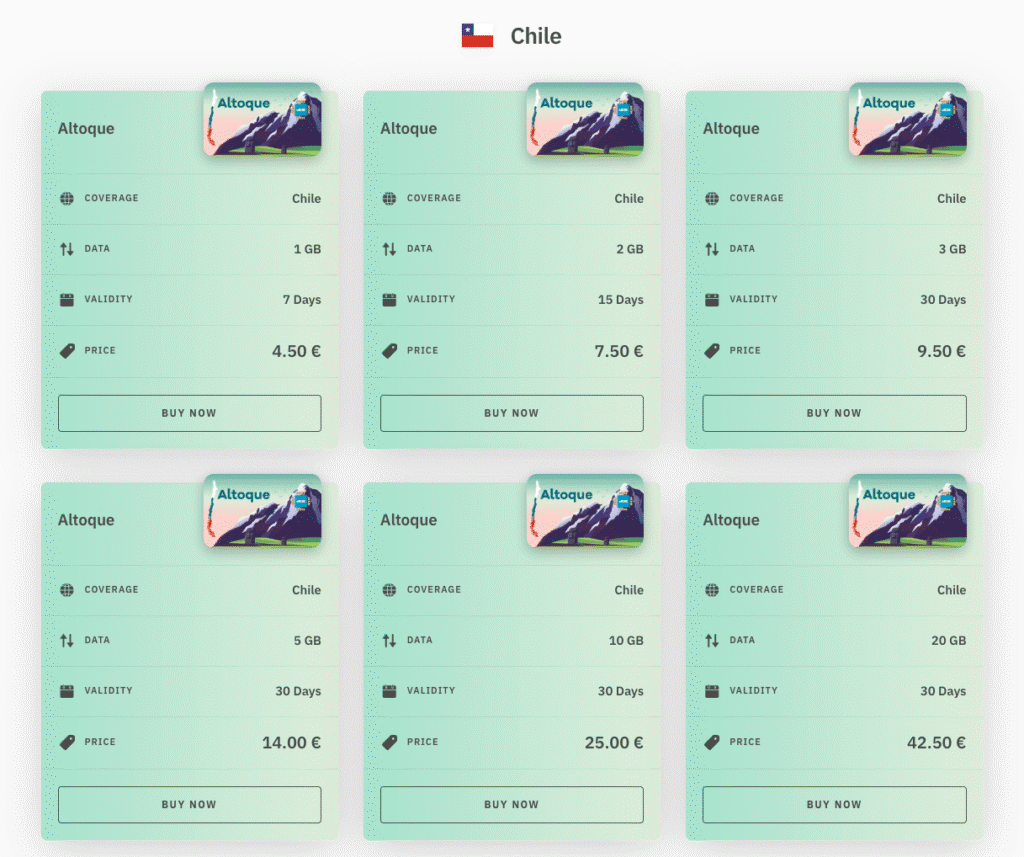
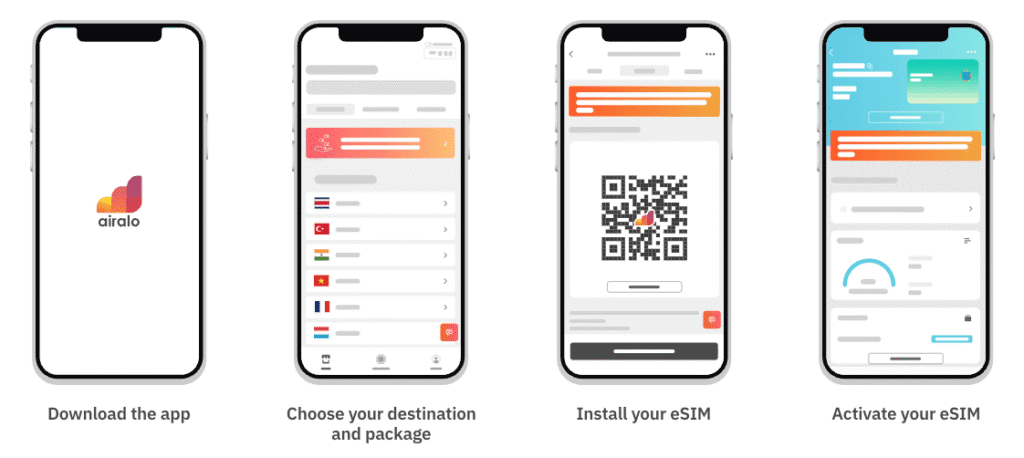
It’s honestly super simple. The Airalo app walks you through the process step by step, so you don’t have to worry about messing it up.
In short, here’s what to do:
That’s it - just a few clicks and you’re connected. I was online in less than 3 minutes after buying my package.
It’s very easy. When I was about to run out of data in Chile, the Airalo app sent me a notification. That was super helpful because I didn’t have to keep checking my data balance. I just opened the app, clicked on my Chile eSIM, and chose how much data I wanted to add to my bundle. The payment went through instantly, and within a minute the new data was added to my account.
Tip: turn off mobile data for apps you don’t really use while traveling. That way you’ll save data and avoid unnecessary costs.
Short answer: yes. Most new phones already support multiple eSIMs, which means you can add Airalo even if you already have another eSIM installed.
I used it on my iPhone without any problem. In general, eSIM works on iPhone SE (2020 & 2022), iPhone XR, and anything newer than iPhone 11. On Android, most recent Samsung Galaxy, Google Pixel, and Huawei models also support it.
If you're not sure, here's the full Airalo eSim device list.
I bought my Airalo bundle about three days before departure. That gave me plenty of time to install it on my phone at home, without any stress. As soon as I landed in Chile, I just turned on mobile data and I was online immediately. No hiccups, no hunting for SIM card shops at the airport - just instant internet.
In my opinion, yes. Have I tried every single other eSIM out there? No. But Airalo gives me everything I actually care about: good coverage, fast internet, easy installation, fair pricing, and solid reliability. For me, that’s more than enough.
If you’re traveling to Chile in 2025 and want a simple, stress-free way to stay connected, I’d recommend giving Airalo a try.
The road started rough and bumpy, and soon we were crawling along the edge of a cliff with a steep drop on our right. Just when it felt a little too sketchy, the view opened up into one of the most beautiful parking spots I’ve ever seen, surrounded by colorful flowers.
Two locals welcomed us with kind smiles, and from there a wooden stairway led us down through the trees. Hibiscus flowers were everywhere, making it feel like a hidden garden. We dropped our bags at the lockers (already in swimwear underneath) and followed the path down to the pools.
Parque Termal Botánico has its charm both in real life and online, their Instagram, Facebook, and TikTok give a taste of the atmosphere even before you arrive.
Getting to Parque Termal Botánico already felt like part of the adventure, first a bumpy road, then a stretch along a cliff edge with a steep drop on the side. Just when it felt a bit sketchy, the road opened into one of the prettiest parking spots I’ve seen, full of colorful flowers.
Two locals greeted us with smiles, and a wooden stairway led us down through hibiscus-filled paths to the pools. What makes this place stand out is that it’s not just hot springs, it’s also a garden. Pools are scattered between trees and flowers, with some open-air, some cave-like, and even one inside a glass “crystal palace.”
The vibe is calm, green, and peaceful, more of a retreat than an adventure. Staff were kind, the setting felt unique, and the balance of water and gardens made it a great memory in Chile.
Imagine walking down through shaded gardens and between lush trees until you spot the first warm pool glinting through the branches, that’s Parque Termal Botánico. The wooden and gravel paths lead you past flowers, ferns, and greenery, with pools scattered around the park. In total there are ten pools: seven open-air, two tucked away in cavern-like spaces, and one inside a large glass “crystal palace” that feels like soaking in a greenhouse.
What makes this place different is that it’s not just about the water, it’s also about the gardens. Parque Termal Botánico calls itself the world’s first spa built inside a park, blending wellness with plant conservation. It feels more curated and garden-like compared to the rugged vibe of other hot springs.
Facilities are modern and comfortable, with heated changing rooms and showers, though there aren’t that many of them. I’d recommend arriving already in swimwear so you can head straight to the pools, and just shower back at your accommodation afterwards.
One thing to know before you go: there aren’t many showers or changing rooms at Parque Termal Botánico. If you want to save time (and avoid waiting around), I’d recommend changing into your swimwear at home so you can head straight to the pools when you arrive.
For showers, it’s easiest to rinse off back at your accommodation instead of queuing here. That way you spend more time relaxing in the hot springs and less time dealing with logistics.
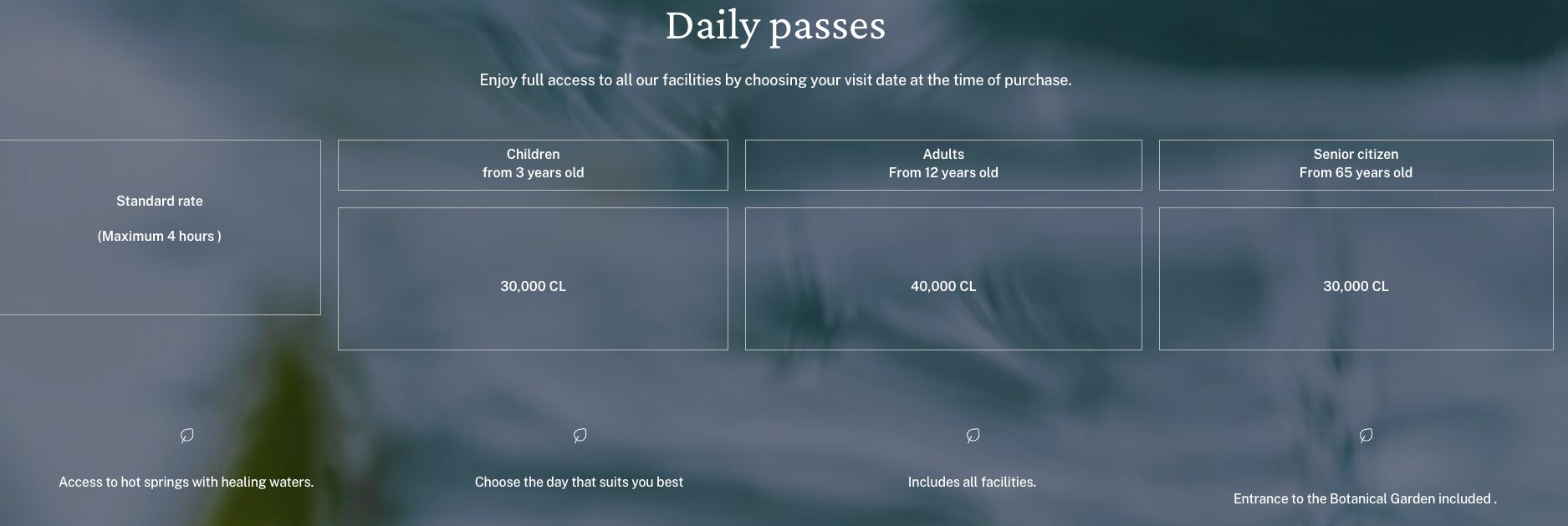
The entrance fee depends on age, but tickets are always valid for a maximum of 4 hours:
The ticket price includes access to all thermal pools, the botanical garden, trails, and facilities. Entrance to the Botanical Garden is also included, so you can enjoy the mix of hot springs and nature in one visit.
Parque Termal Botánico features a total of 10 thermal pools, designed to blend seamlessly with its botanical setting. Most are open-air, while a couple are tucked into cave-like alcoves, and there’s even a beautiful glass-enclosed “crystal palace” pool that brings a greenhouse feel to the garden experience.
Parque Termal Botánico is a natural hot springs complex just outside Pucón, set in a lush botanical park. Unlike some of the wilder termas, this place feels more like a garden retreat, with flowers, trees, and pools scattered along wooden walkways.
It’s a mix of nature and comfort, perfect if you want to soak in warm waters while surrounded by greenery.
The name is simple, but it perfectly fits the place:
So, literally: Botanical Thermal Park.
The name reflects exactly what you’ll find, hot spring pools surrounded by gardens, flowers, and trees.
Parque Termal Botánico combines hot springs with a garden atmosphere, giving you both comfort and nature in one place:
Instead of rugged adventure, Parque Termal Botánico is more of a garden retreat with hot springs, blending relaxation, greenery, and modern comfort.
Packing light makes your visit easier, but a few things are essential:
Optional but nice to have:
💡 Lockers are available for your belongings, but showers and changing rooms are limited. Best tip: arrive already in swimwear and shower back at your accommodation.
The pools at Parque Termal Botánico are fed by natural volcanic springs, rich in minerals that people have used for centuries to relax and recharge. A soak here can bring a few noticeable benefits:
While it’s not a medical treatment, most visitors leave feeling calmer, lighter, and more refreshed.

You’ve got two options when it comes to tickets for Parque Termal Botánico, and both are easy.
Booking online gives you a head start; buying on-site keeps it spontaneous. Either way, you’ll be stepping into the gardens and warm pools before you know it.
It’s easy to lose track of time once you sink into the warm pools, but pacing yourself makes the visit more enjoyable (and healthier):
Switching pools, resting, and staying hydrated will keep you feeling refreshed rather than drained.
Getting there without your own wheels is no problem.

If you don’t want to deal with parking, renting a car, gravel roads, or directions, GetYourGuide is the simplest and most stress-free way.
These two hot springs are completely different experiences, each with its own personality.
Termas Geométricas
Tucked into a narrow canyon with a forest stream running through it, this place feels dramatic and adventurous. The bright red walkways, designed by architect Germán del Sol, connect around 20 pools that range from pleasantly warm to almost volcanic hot. There are also ice-cold plunge spots and waterfalls if you want the hot–cold contrast. Getting there takes about 1.5 to 2 hours from Pucón on partly gravel roads, so the journey is part of the adventure. Read my full review of Termas Geométricas here.
Parque Termal Botánico
Much closer to Pucón, only about 30 minutes away, this place feels more like a botanical garden with hot springs scattered among flowers and trees. There are 10 pools in total, including open-air, cave-style, and a glass-enclosed “crystal palace.” Facilities are more modern, with heated changing rooms, showers, lockers, and a café. The atmosphere is calm, green, and family-friendly.
| Termas Geométricas | Parque Termal Botánico | |
|---|---|---|
| Vibe | Wild canyon, dramatic & adventurous | Garden retreat, serene & botanical |
| Design | Geometric wooden walkways | Botanical, greenhouse-style touches |
| Pools | Around 20, big hot–cold contrasts | 10, more relaxed temperatures |
| Facilities | Basic changing rooms & lockers | Changing rooms, showers, café |
| Access | 1.5–2 hrs from Pucón, gravel roads | ~30 min from Pucón, easier drive |
Both are worth visiting, it really depends on what you’re looking for. For drama and design, go to Termas Geométricas. For comfort and garden vibes, Parque Termal Botánico is the better choice.
So you leave Pucón, hit a bumpy gravel road, dust swirling behind every car, and before you know it you’re parking on the side of a volcano. The drive itself feels endless, but it ends with the perfect reward: overheating and undercooling at Termas Geométricas.
This is my personal take on one of the most iconic hot springs in Chile.
After visiting Parque Termal Botánico, I was hooked. I wanted more hot springs, but wilder, the kind where you’re surrounded by forest, hearing birdsong and rushing streams, with freezing waterfalls crashing beside steaming pools. And yes, no internet connection, which honestly makes it even better.
When we finally arrived at Termas Geométricas, my first thought was: do the people working here actually make this crazy drive every single day?
It’s hard to put Termas Geométricas into words because it’s even more beautiful than the photos could ever show. For me, it’s probably the #1 place in Chile where human design blends perfectly with wild nature, those red walkways don’t feel artificial at all, they feel like they’ve always been there.
Then came the pools. The cold pool was way colder than I ever imagined (think glacier water), and the hot pool was way hotter than expected, stepping into 46° feels like your skin is about to melt, but in the best possible way.
What I loved most was the space. With so many pools spread out, it never felt crowded or overwhelming. Add in the forest setting, the drive through lakes and volcanoes, and the genuinely kind staff welcoming you at the entrance, the whole experience felt special from start to finish.
Honestly? One of my funnest memories in Chile.

Imagine stepping into the forest and suddenly finding a bright red wooden walkway leading you deeper between trees, rocks, and streams. That’s Termas Geométricas. The entire hot springs complex is connected by these long boardwalks, stretching almost 450 meters, with pools branching off on both sides.
As you walk along, you’ll pass steaming pools of different shapes and sizes — some tucked in quiet corners, others right next to the sound of rushing water. Halfway through, there’s even a freezing waterfall cutting through the middle of it all. At the very top, the path ends at a natural ice-cold pool fed straight from the mountain.
The design makes it feel like an adventure trail rather than a spa: you wander, discover, and choose your own spot to relax. It’s part wild nature, part geometric design, and completely unique.
🎥 Watch the video below for a first impression of the layout before you go.
The entrance fee to Termas Geométricas isn’t a flat price, it depends on a few things:
In general, you’ll pay somewhere between $45–50 USD per person if you book through their official website.
The name isn’t random, it actually makes sense once you see the place.
Why “geometric”?
So basically: Geometric Hot Springs.
Pack light, but don’t forget the essentials, it makes your visit way more comfortable:
Optional but nice to have:
💡 Lockers are available to keep your things safe, just note you’ll need to leave an ID card or even your glasses as a deposit for the key.
Termas Geométricas has everything you need for an amazing experience at one of the most iconic hot springs in Chile:
So while it’s all pretty minimal, the mix of forest, hot springs, and clever design is exactly what makes Termas Geométricas special.
It’s tempting to sink in for hours, but pacing yourself makes the experience much better (and safer):
Switching between hot and cold, resting, and staying hydrated makes the whole day more enjoyable.

The drive from Pucón to Termas Geométricas takes about 1 hour 45 minutes to 2 hours, depending on traffic and road conditions.
It’s a bit of a mission, but the mix of lakes, mountains, and forest makes the drive part of the adventure.
Termas Geométricas isn’t just one pool, it’s a whole network of hot springs and a ice cold natural water pool.
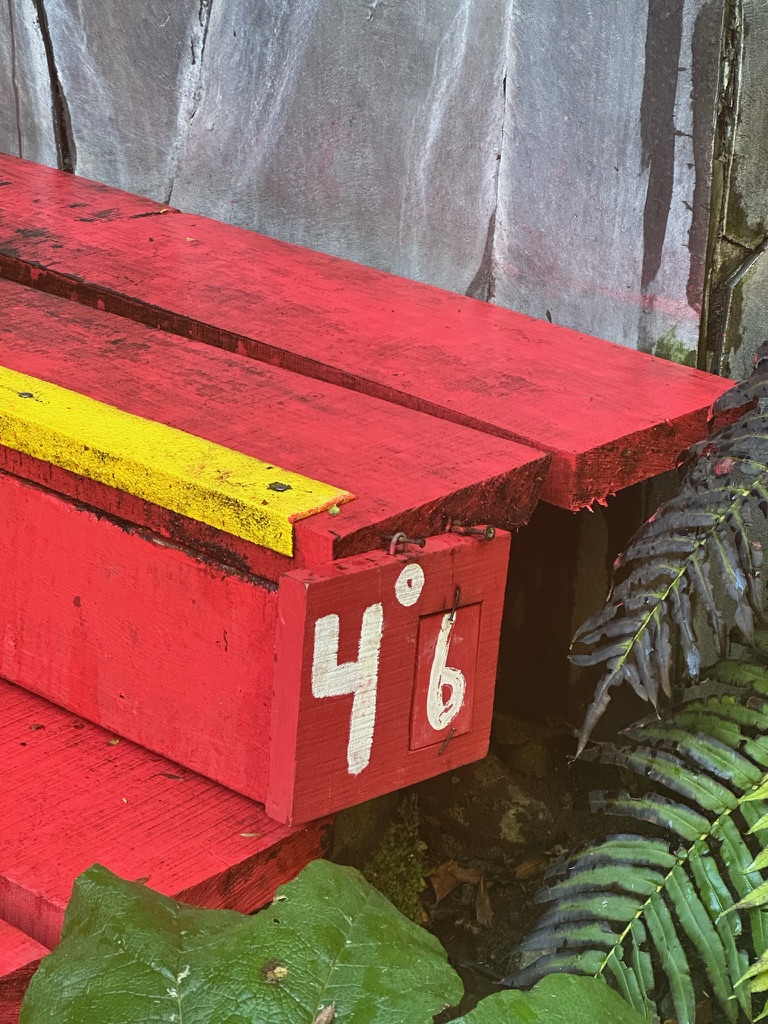
Switching between boiling pools and icy water is part of the fun, and kind of a shock therapy, just make sure to drink plenty of water and take it slow, especially when stepping out of the hottest pools (up to 46°).
Bad weather doesn’t ruin Termas Geométricas, it actually makes it even more magical.
So don’t cancel if the forecast looks bad, rain or snow just adds to the atmosphere.
The pools at Termas Geométricas aren’t just hot, the water comes straight from underground volcanic springs and is packed with minerals. Locals (and science) say soaking here can do a few good things for your body:
While it’s not a medical treatment, most visitors leave feeling lighter, calmer, and more energized.
Getting to Termas Geométricas can feel tricky without your own wheels, but there are a few good options:
Option 1: Hiking from Pucón to the Termas – this is the hardcore route. It’s a long and challenging hike, but if you’re into adventure, the thought of walking through forest and mountains only to end up soaking in volcanic hot springs is pretty amazing. It has great reviews from hikers who’ve done it, and it’s definitely for those who want the journey to be as memorable as the destination. (link).

Option 2: Car lift from Pucón to the Termas (tickets included) – some tour operators offer packages where you get transport plus entrance tickets in one. It’s a stress-free option if you don’t want to drive yourself. Disclaimer: I haven’t taken this option personally, but it looks convenient if you’re short on time. 2 hours drive, 4 hour at the termen (tickets included) and 2 hours drive back (link).
Option 3: Rent a car in Temuco and drive yourself, this is what I did, and honestly, I recommend it if you enjoy road trips. Picking up a rental in Temuco gives you the freedom to explore lakes, small towns like Coñaripe, and stop for views along the way. The drive itself, paved roads, dirt tracks, forest climbs, is part of the adventure (link).

If you don’t feel like dealing with the gravel road, booking through TripAdvisor is the easiest way. They have multiple options and handle the logistics, so you can just sit back, enjoy the ride, and hop straight into the pools.
1000% yes. If someone asked me for just one hot spring to visit in Chile, this would be it. The mix of steaming pools, icy waterfalls, forest all around, and those bold red walkways makes it unlike anywhere else I’ve ever been.
I’d tell my friends and family to go for the space and the calm, it never felt overcrowded. And to strangers? Same answer. Even if you’re not usually a “hot springs person,” Termas Geométricas is one of those places that surprises you.
For me, it’s the perfect blend of adventure, design, and relaxation. 100% worth the journey to get there.